For my very first neighborhood post, I visited the monument in Woodside, Queens, which marks the geographic center of New York City.
According to the Department of City Planning, however, the city's actual geographical center is between Wyckoff Avenue and St. Nicholas Avenue on Stockholm Street. This would make Bushwick, on a map at least, the heart of the city.
In 1638, the Dutch, unaware of the future geographical significance, paid the Canarsie Indians "eight fathoms of duffel cloth, eight fathoms of wampum, twelve kettles, eight adzes, eight axes, and some knives, corals, and awls" for a parcel of land stretching from the East River to the swamps of Mespatches. That purchase, which was considerably more than what they had paid for Manhattan, included what would become the present-day neighborhoods of Bushwick, Williamsburg, and Greenpoint.
In the nearly 400 years since, the neighborhood's fortunes have fluctuated wildly. From the prosperity Bushwick enjoyed during its years as “the beer capital of the Northeast” to the dark days of looting and arson following the infamous Blackout of 1977 to its recent coronation as one of the “coolest neighborhoods” in the world, the neighborhood has, in many ways, acted as a barometer for the shifting fortunes of New York City itself.
There is a solid consensus on three of Bushwick’s borders. Broadway to the southwest, Cypress and Wyckoff (which delineate the Queens border) to the northeast, and Evergreen Cemetery to the southeast. While anything north of Flushing Ave is often considered part of East Williamsburg, I’d be willing to wager a well-charred Neapolitan pizza from neighborhood stalwart Roberta’s that the few extra blocks up to Johnson Avenue are now firmly in Bushwick’s footprint.
“Bushwick History Lesson”
This passage from Jacqueline Woodson’s 2014 novel Brown Girl Dreaming encapsulates much of Bushwick’s history, beginning with its charter as a Dutch town in the seventeenth century.
Before German mothers wrapped scarves around their heads,kissed their own mothers good-bye and headed across the world to Bushwick-
Before the Italian fathers sailed across the ocean for the dream of America and found themselves in Bushwick-
Before Dominican daughters donned quinceanera dresses and walked proudly down Bushwick Avenue
Before young brown boys in cutoff shorts spun their first tops and played their first games of skelly on Bushwick Streets-
Before any of that, this place was called Boswijck,
Settled by the Dutch And Franciscus the Negro, a former slave who bought his freedom.”
On February 16, 1660, 23 men applied to Governor Stuyvesant for permission to found a new settlement in Brooklyn. Among the men were French Huguenot immigrants, Dutch colonists, and Francisco de Neger, a formerly enslaved Angolan who had successfully petitioned the Dutch West India Company for his freedom.
The Dutch Director-General granted the men the charter and named the land “Boswyck,” meaning “town in the woods” or, more evocatively, “heavy woods.” The area remained predominantly rural for the next several decades and was used for farming tobacco.
Back then, Boswyck (which would eventually be corrupted to Bushwick) was one of the six original towns of Brooklyn and encompassed present-day Williamsburgh and Greenpoint.

PROST
The Germans that Jacqueline Woodson referenced above started migrating to New York in large numbers after the failed German Revolution of 1848. While many of them settled in the Lower East Side, a significant percentage decided to lay down roots in Bushwick, which by that point had begun the gradual transformation from agriculture to manufacturing. The Germans accelerated this transformation by opening up several large breweries.
Up until that point, everyone was quaffing room-temperature ales, but the Germans shook things up by introducing lagers. Lagers, from the German word “lagern,” which means “to store,” required cold fermentation and had to be kept at low temperatures for extended periods of time. In the days before refrigeration, a deep cellar, or better yet, a cave, was necessary for the process. Bushwick’s soft soil made it an ideal place to dig some caves and open a brewery.
By the late 19th century, there were nearly 50 breweries in Brooklyn, cranking out over 10% of the country's beer.
An 1888 article from the Brooklyn Daily Times,1 undoubtedly penned by someone affiliated with the breweries, extolled the virtues of the “National Beverage,” which they describe as a “wholesome, exhilarating and health giving tonic which may be enjoyed by all classes, old and young alike, with the certainty, if indulged in moderation, that its action will prove decidedly beneficial.”
By the turn of the 20th century, Bushwick was a prosperous and yeasty place. The 14 blocks of "brewer's row" made many fortunes, and beer barons like William Ulmer, whose brewery produced 3,200,000 gallons of beer a year, invested in the neighborhood. Prohibition, however, put a damper on things.
Only nine breweries managed to ride out the dry years of the Volstead Act, and most of the neighborhood’s German population moved on. The vacuum was quickly filled by Italian immigrants who, like the Germans some fifty years earlier, were immigrating to the city in huge numbers. The new residents of Bushwick were predominantly Sicilian, and for a few decades, their neighborhood was one of the city’s largest Italian American enclaves.
Then, in the 1960s, the neighborhood demographics shifted yet again. Working-class African-American and Puerto Rican families moved to the neighborhood, taking advantage of the area’s low rents. Unfortunately, those low rents coincided with high unemployment, as most of the area’s industrial and manufacturing jobs had disappeared. Rheingold, the last and largest Bushwick brewery, closed in 1976.
THE GREAT SOCIETY
The white flight that was endemic in the city during this era was accelerated in Bushwick by the same blockbusting tactics that I recently wrote about in Springfield Gardens. These efforts were compounded by a Federal Housing Administration (FHA) mortgage scandal.
The Great Society federal mortgage program insured home loans to low-income buyers, offering government-insured mortgages with low down payments and subsidies. Unfortunately, the system was easily exploitable, and many mortgage lenders overvalued the homes to the extent that the borrowers could not afford them.
One particularly egregious example was the Ludwig Schaefer home on 217 Evergreen Street.2 In 1960, Mr. Schaefer paid $10,000 for the house; nine years later, a real estate company bought it for $6,000.
They turned around and sold it for $20,000 the following week. Seven years later, the new owner defaulted on his $18,500 loan.
In a five-year period in the late 1960's and early 70's, the Bushwick neighborhood of Brooklyn was transformed from a neatly maintained community of wood houses into what often approached a no man's land of abandoned buildings, empty lots, drugs and arson.
In the early 1970s, an estimated 500 of Bushwick’s 12,000 buildings were vacant due to bad loans. Many others were vacated by tenants who didn’t want to live in an abandoned neighborhood.
New York City Blackout of 1977
By the summer of 1977, the situation in Bushwick had become dire. Thousands of families had left, and those who remained had to be on constant alert for the fires that plagued the neighborhood. Fires were so frequent that parents had their kids sleep in street clothes in case they had to escape in the middle of the night.
Like the South Bronx at the time, many landlords intentionally set the fires, finding insurance payouts a more reliable source of income than rent. It wasn’t just Bushwick, either. The city was still reeling from the financial crisis of 1975, unemployment and crime rates were high, and the Son of Sam, serial killer David Berkowitz, was still on the loose.
Then, at 8:34 PM on July 13th, 1977, in the midst of a brutal heat wave, a succession of three lightning strikes plunged the city into darkness and Bushwick into chaos.
Almost as soon as the power went out, the looting began. Store gates were breached with saws, crowbars, and even cars. Looting was rampant throughout the city, but Bushwick was hit the hardest. Over 24 hours, 35 blocks of Broadway were destroyed. 134 stores were looted. Forty-five of them were set on fire.
THE WELL
One stretch of the neighborhood that was spared the post-blackout looting and arson was along Knickerbocker Avenue. While the neighborhood was on its way to having the largest Latino population in Brooklyn, some Italians remained. In the 70s, Knickerbocker Avenue, a main commercial thoroughfare, was controlled by Carmine “The Cigar” Galante, a boss in the Bonanno crime family. The Bonannos were the only New York City crime family that hadn’t banned drug dealing.
To help run his operation, Galante had brought over several Sicilians with no police records and no allegiance to the power structures and rules of the American mafia. Galante’s Sicilians, “the meanest killers in the business," were known as the Knickerbocker Zips.
In 1979, Galante was gunned down while having lunch on the rear patio of the Joe and Mary Italian-American Restaurant at 205 Knickerbocker Avenue.
While the Italians moved on, the drug trade persisted. That stretch of Knickerbocker Avenue between Troutman and Jefferson Streets, known by the police as “The Well," became “the most notorious drug bazaar in Brooklyn…an utterly persistent and hellish vortex.” The namesake of nearby Maria Hernandez Park was killed in her apartment after voicing her opposition to local drug dealing.
“The coolest neighborhood in the world”
Today, Maria Hernandez Park is full of families picking up vegan pastries at the farmers’ market and people letting their French Bulldogs stretch their little legs in the dog run. Like the park, much of the neighborhood has changed. In the early 2000s, artists priced out of Williamsburg started moving to Bushwick in droves. The accompanying DIY music scene gradually became codified as several venues and clubs opened up, attracting more young New Yorkers to the northwestern corner of Bushwick.
In 2014, Vogue magazine, arbiter of all things cool, named Bushwick the seventh coolest neighborhood in the world. All that coolness came at a price. According to a Bloomberg analysis of StreetEasy data, median rental prices in the neighborhood increased 108% between 2010 and 2023. 3
Of course, in 2010, your rental didn’t include access to a climbing wall, a bowling alley, or a dog spa. You can find all those amenities and more at The Denizen, Bushwick’s controversial one million-square-foot rental development spread over two city blocks. The “city within a city,” which also boasts an arcade and a spinning studio, is built on the site of the former Rheingold brewery.
A few years ago, walking around the neighborhood, an empty 40 oz. of Old E. would have been a familiar sight. Today, it’s bottles of apple cider vinegar.
Or cold brew concentrate.
It’s becoming the kind of place you go to remove your tattoo.
Or charge your Porsche.
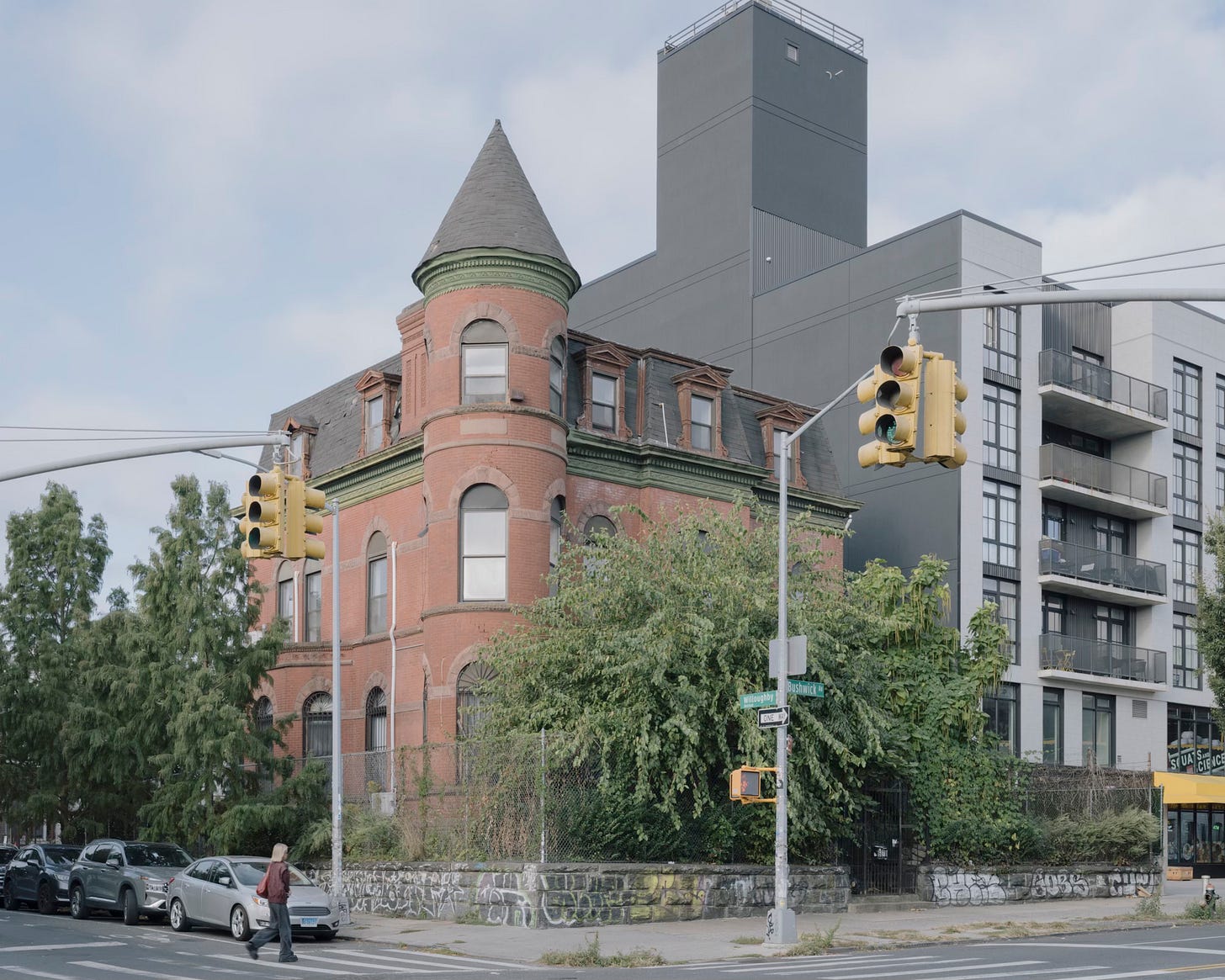
Bushwick has come a long way since the dark days of 1977, transforming from a neighborhood plagued by arson and abandonment to one now grappling with rapid gentrification. In 2020, the de Blasio administration proposed a rezoning plan for Bushwick that was met with significant local opposition. Community activists argued that the plan would accelerate gentrification and lead to widespread displacement, making the neighborhood unaffordable for its current residents.
The debate over Bushwick's future reflects broader tensions in New York City's rapidly changing neighborhoods. New developments like The Denizen symbolize the stark contrast between incoming wealthy residents and the working-class families who have called Bushwick home for generations.
SIGHTS AND SOUNDS
This week’s audio is dominated by the squeal and rumble of overhead trains, with brief cameos from Ray Charles and Marvin Gaye.
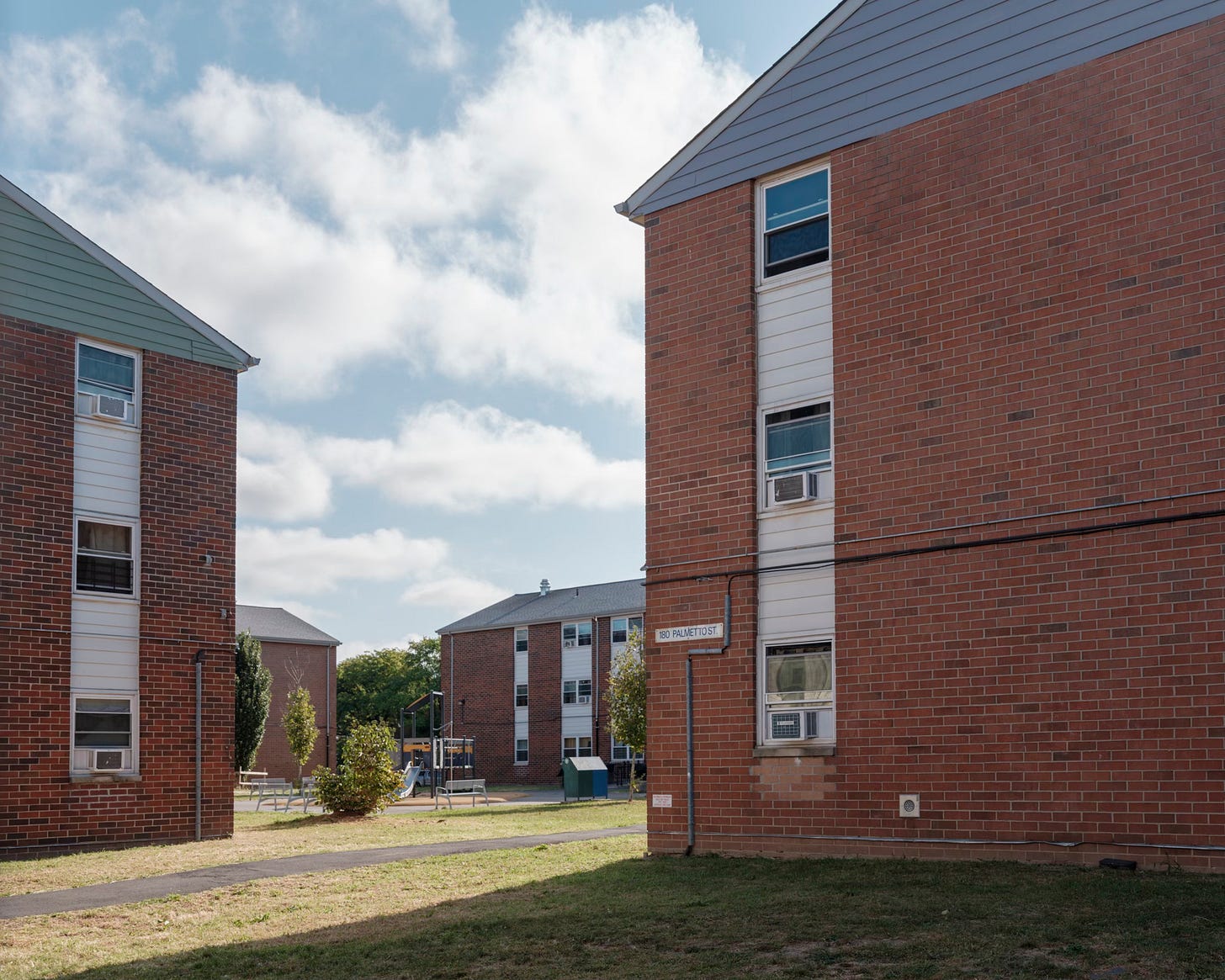
FEATURED PHOTOGRAPHER
Meryl Meisler was born in 1951 in the South Bronx and raised in North Massapequa, Long Island, NY. In 1975, she returned to New York City and studied with Lisette Model, photographing her hometown and the city around her. Between 1981 and 1994, she worked as an art teacher at Roland Hayes Intermediate School 291.
All around me was a wasteland of broken bricks, crumbling concrete, and fallen timber–cooled ember vestiges after the ashes of arson had blown away. I.S. 291 was one of the few functional structures on the block. It was bewildering kids trying to learn and enjoy the day–to–day childhood life amid chaos and despair; amazing teachers whose sense of duty provided structure and purpose within the cinder block fortress of a shattered neighborhood. To me, the natural light of the area was so beautiful, the kids were kids, and the vacant buildings practically whispered stories

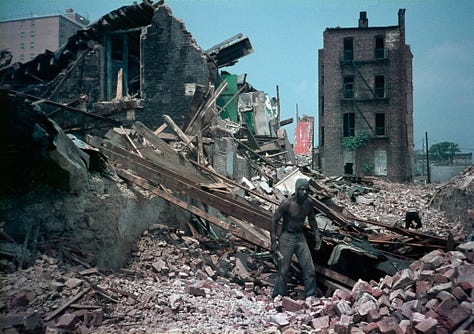
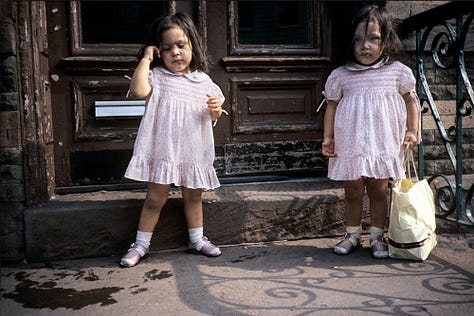
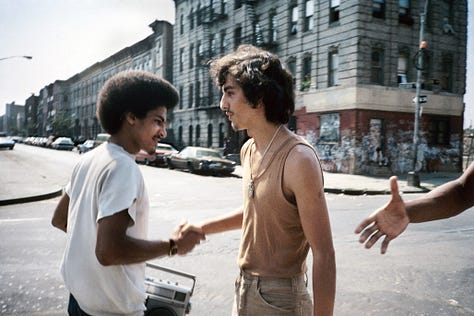
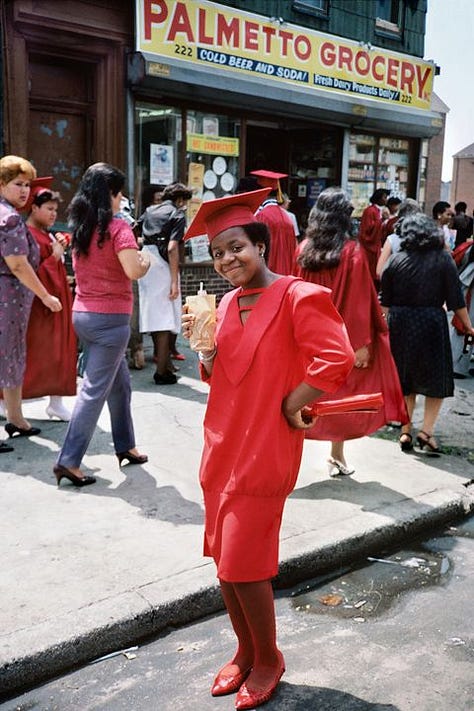
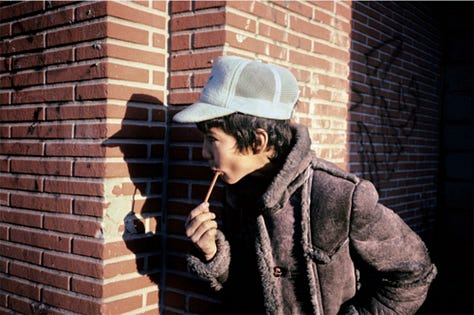
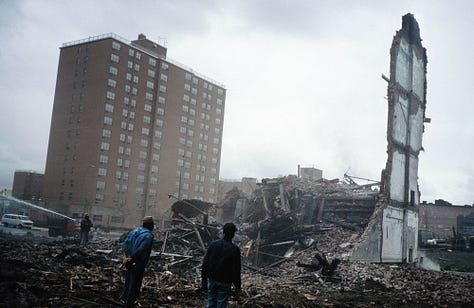
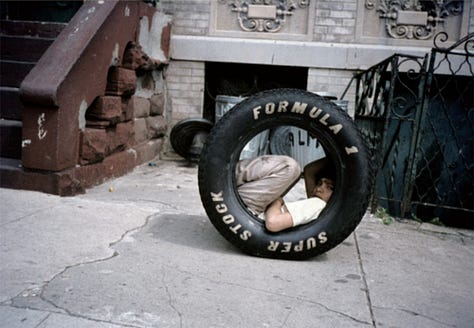
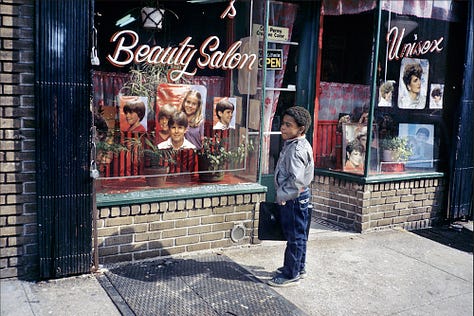
In her book A Tale of Two Cities: Disco Era Bushwick, Meisler juxtaposes her photographs of Bushwick with pictures from the very different world of glamorous New York City discothèques like Studio 54.
ODDS AND END
Recently indicted mayor of New York City, Eric Adams, grew up in Bushwick.
Les Paul and Mary Ford’s jingle for Reingold extra dry.
For Niv Rozenberg’s project, Boswijck, he photographed various Bushwick homes, stripping away their backgrounds and replacing them with solid colors.
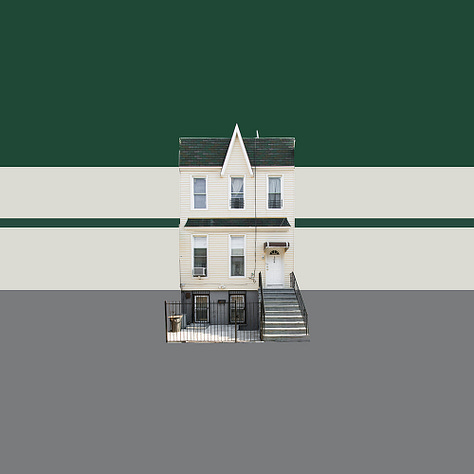
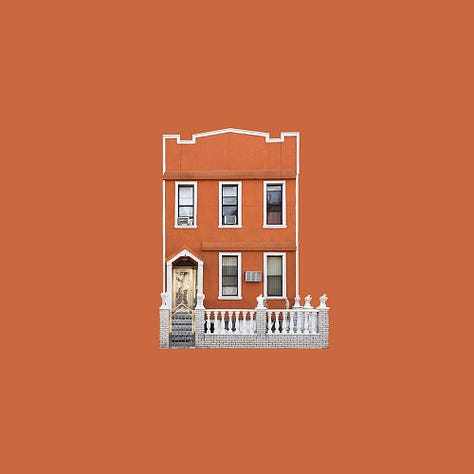
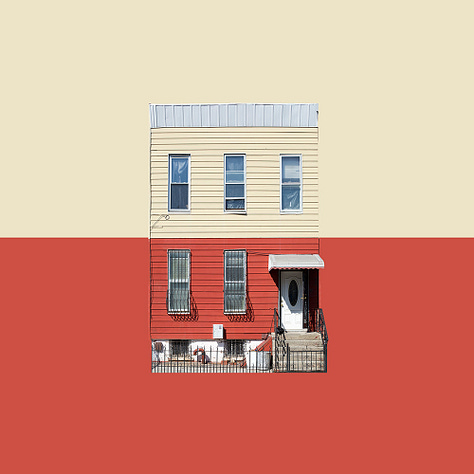
Here is an excellent Curbed piece on the McKibben Lofts in
East WilliamsburgBushwick.This 2007 New York Times short video revisiting the stretch of Broadway impacted by the looting during the blackout of 77 is well worth your time.
The Brooklyn Daily Times, Brooklyn, New York · Wednesday, October 24, 1888
https://www.nytimes.com/1986/02/02/nyregion/fha-case-recalls-bushwick-in-70-s.html
https://www.bloomberg.com/news/features/2024-05-11/how-bushwick-became-the-brooklyn-hub-for-dance-clubs-late-night-parties

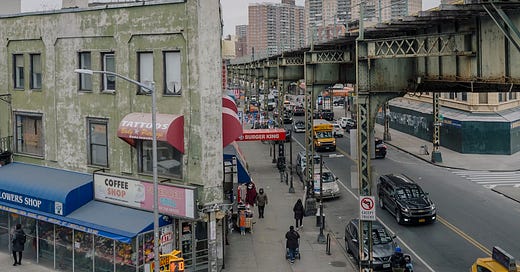




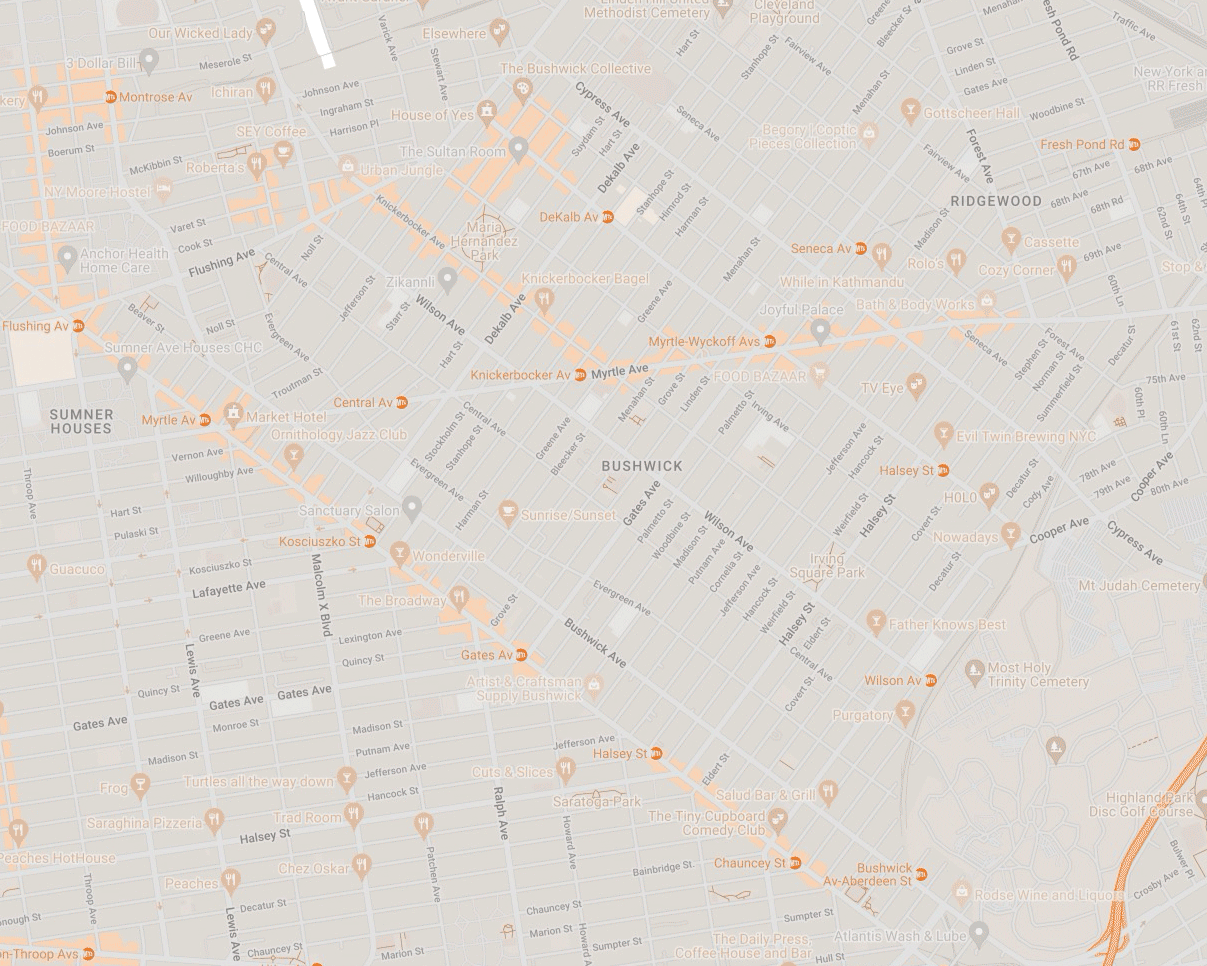
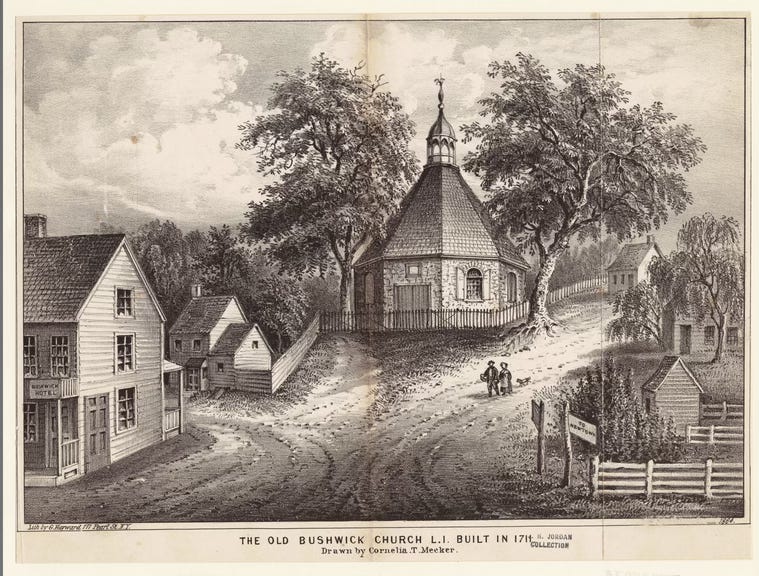
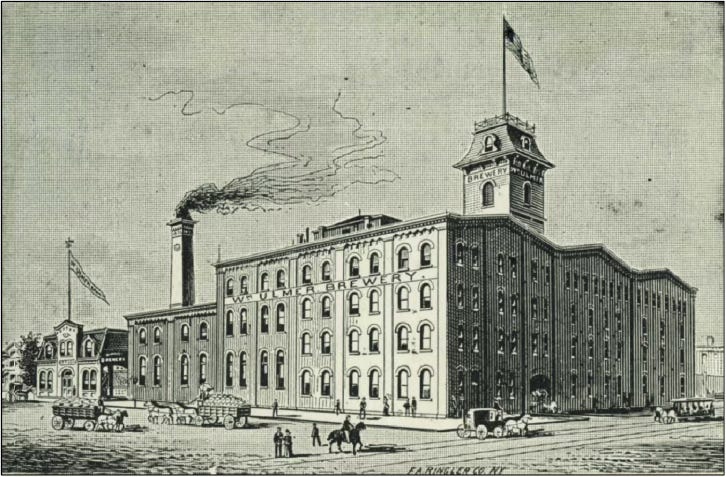
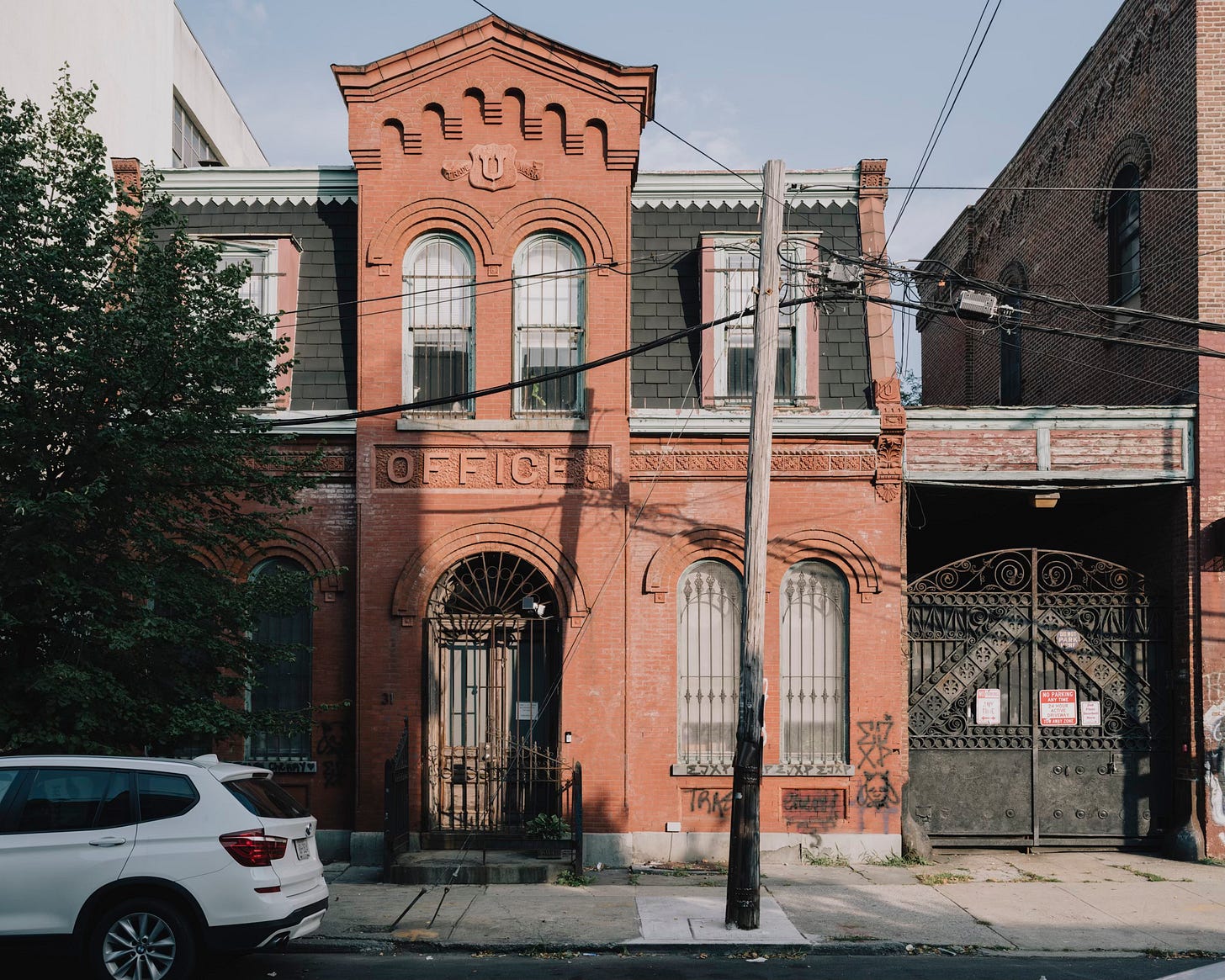
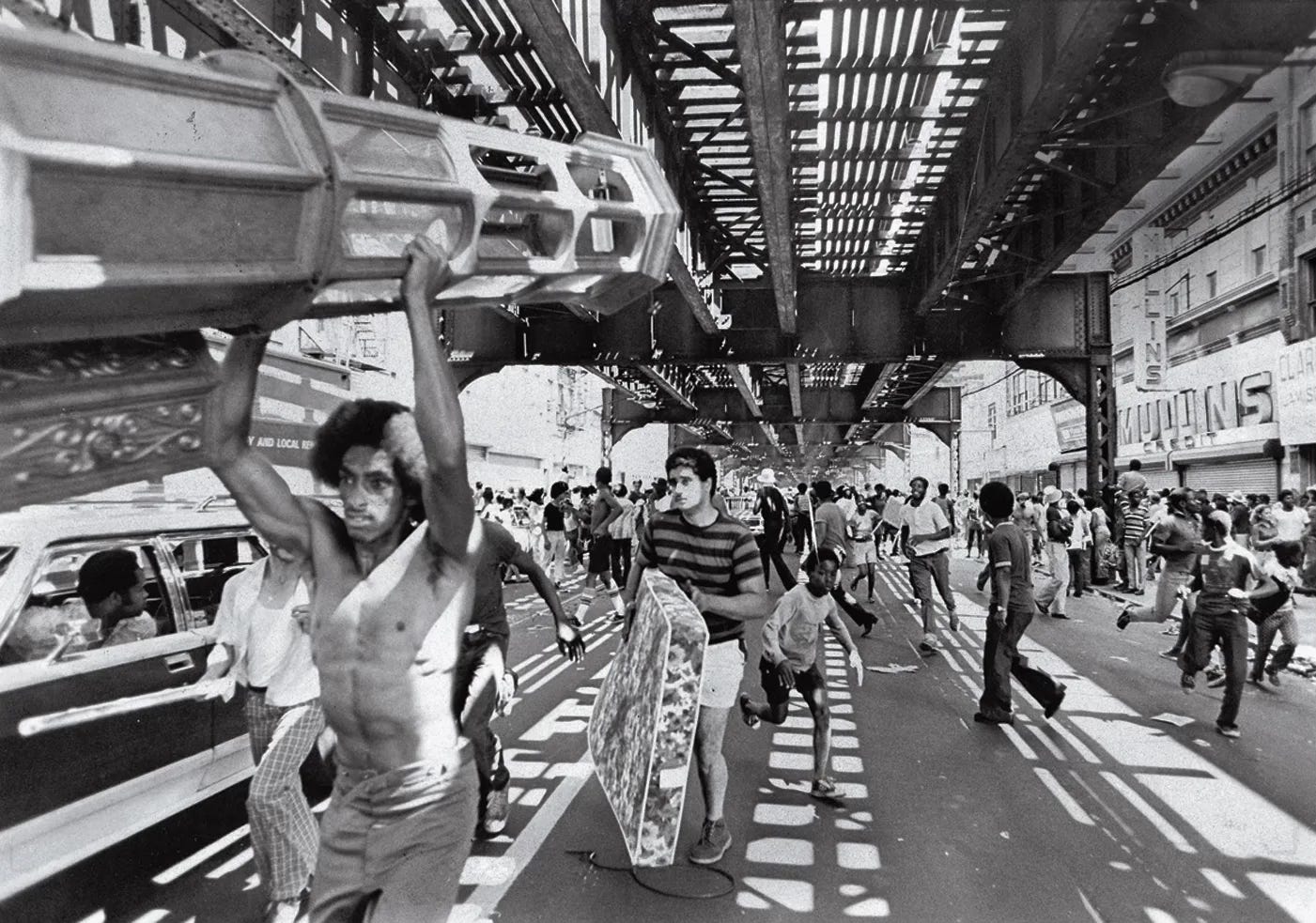
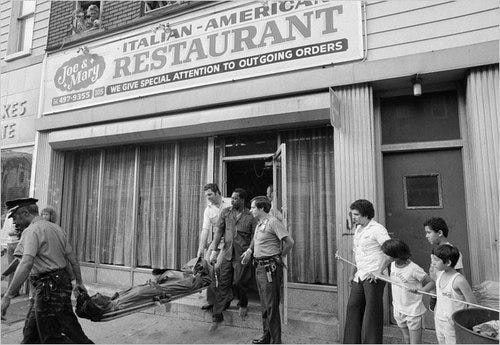
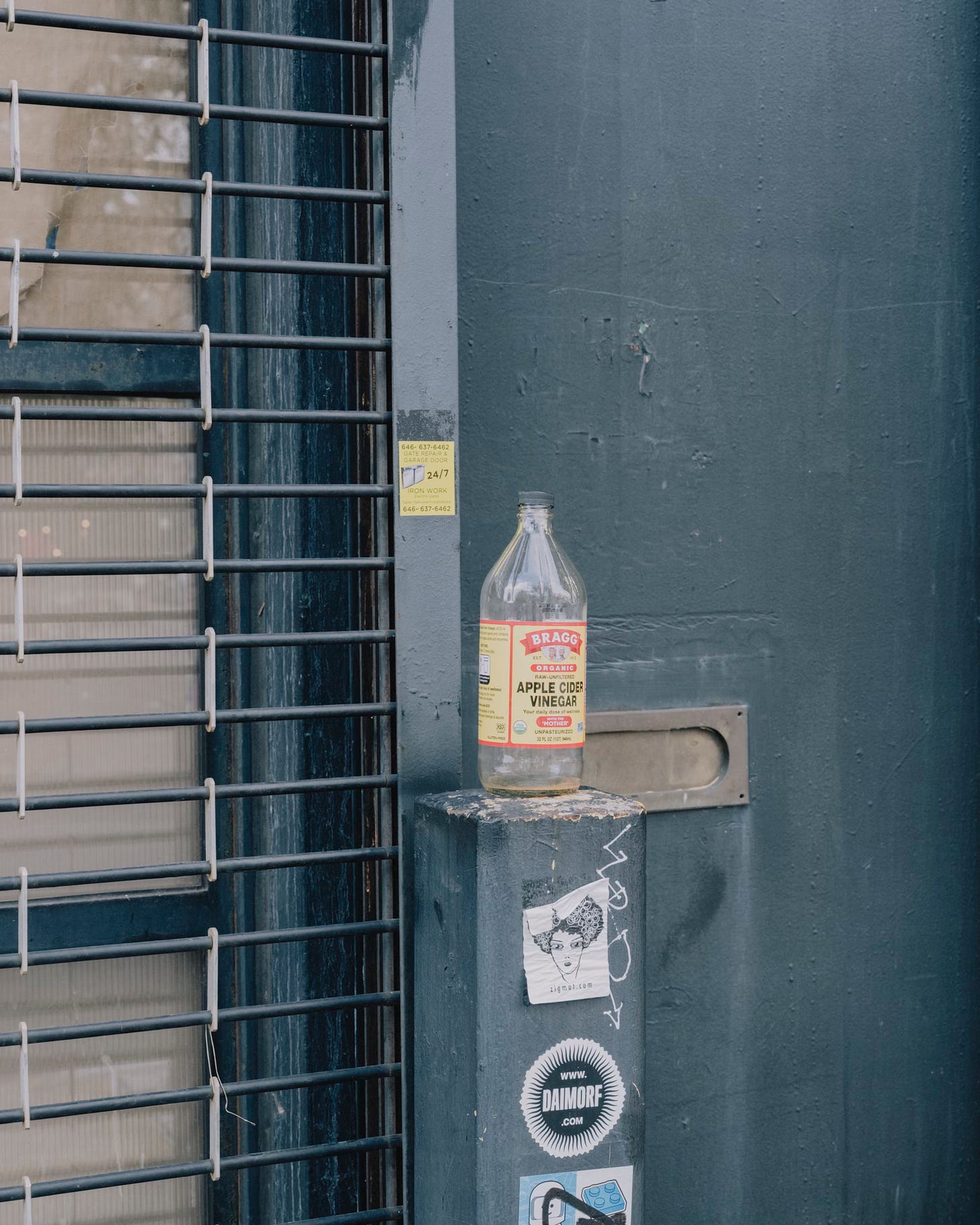
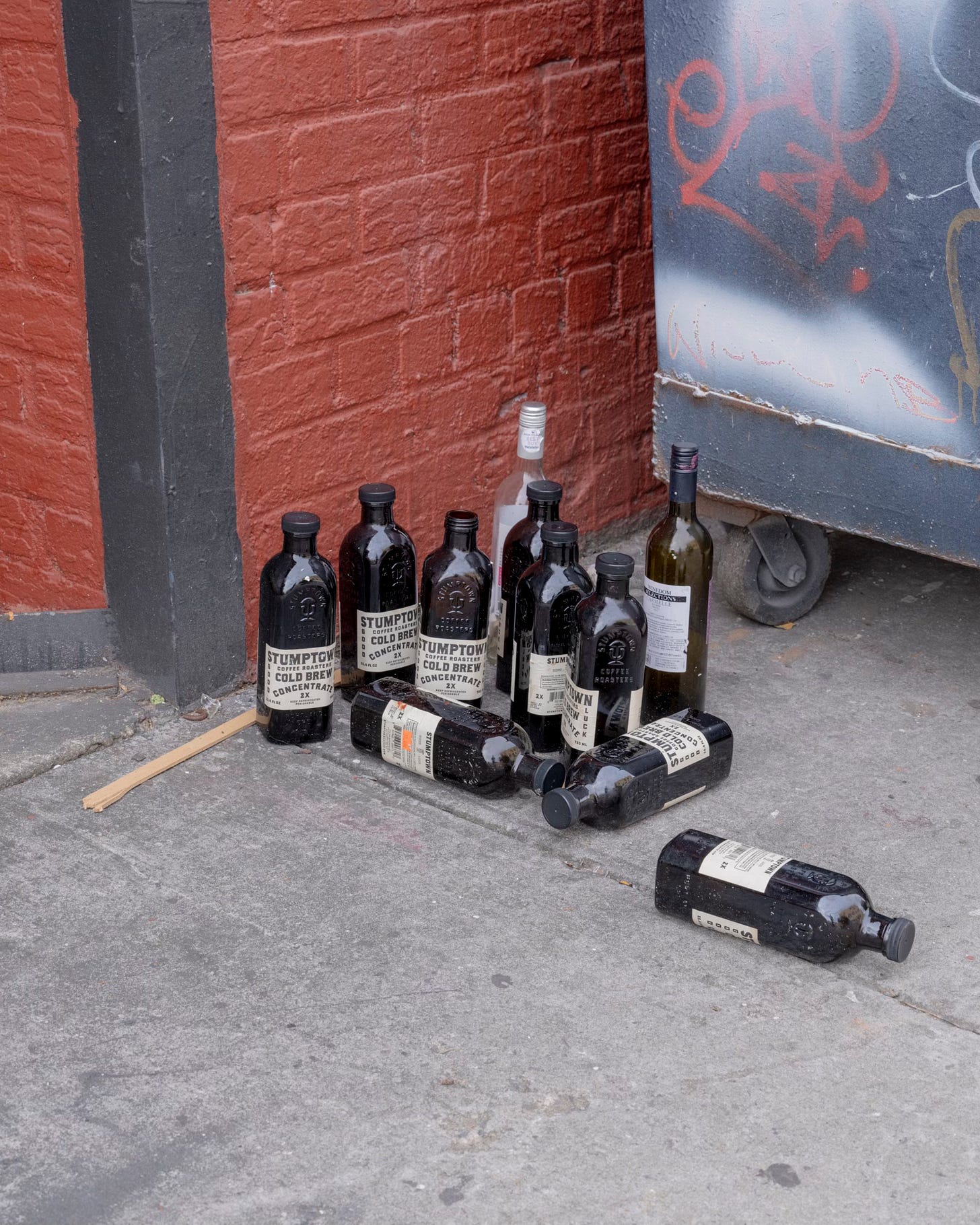
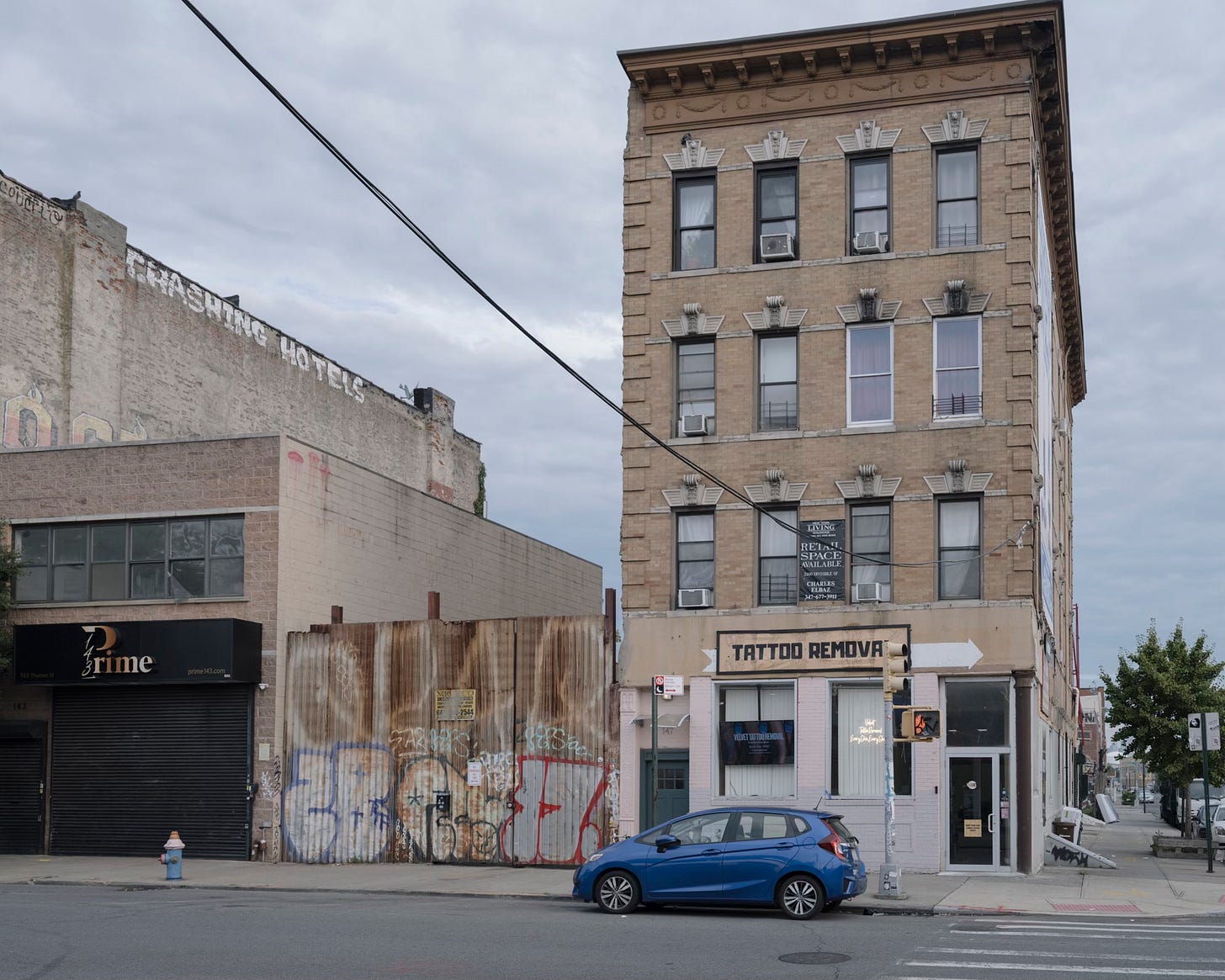

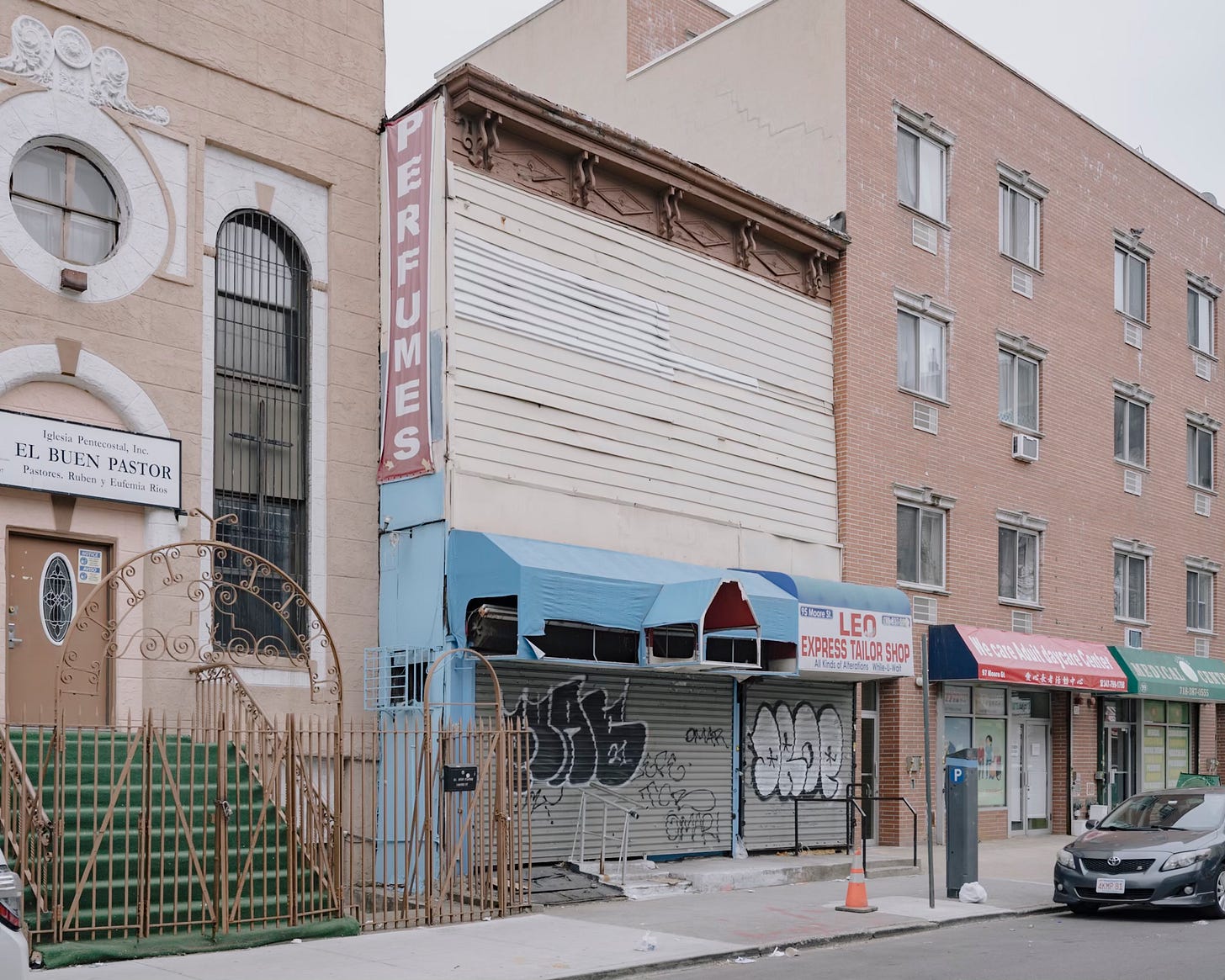
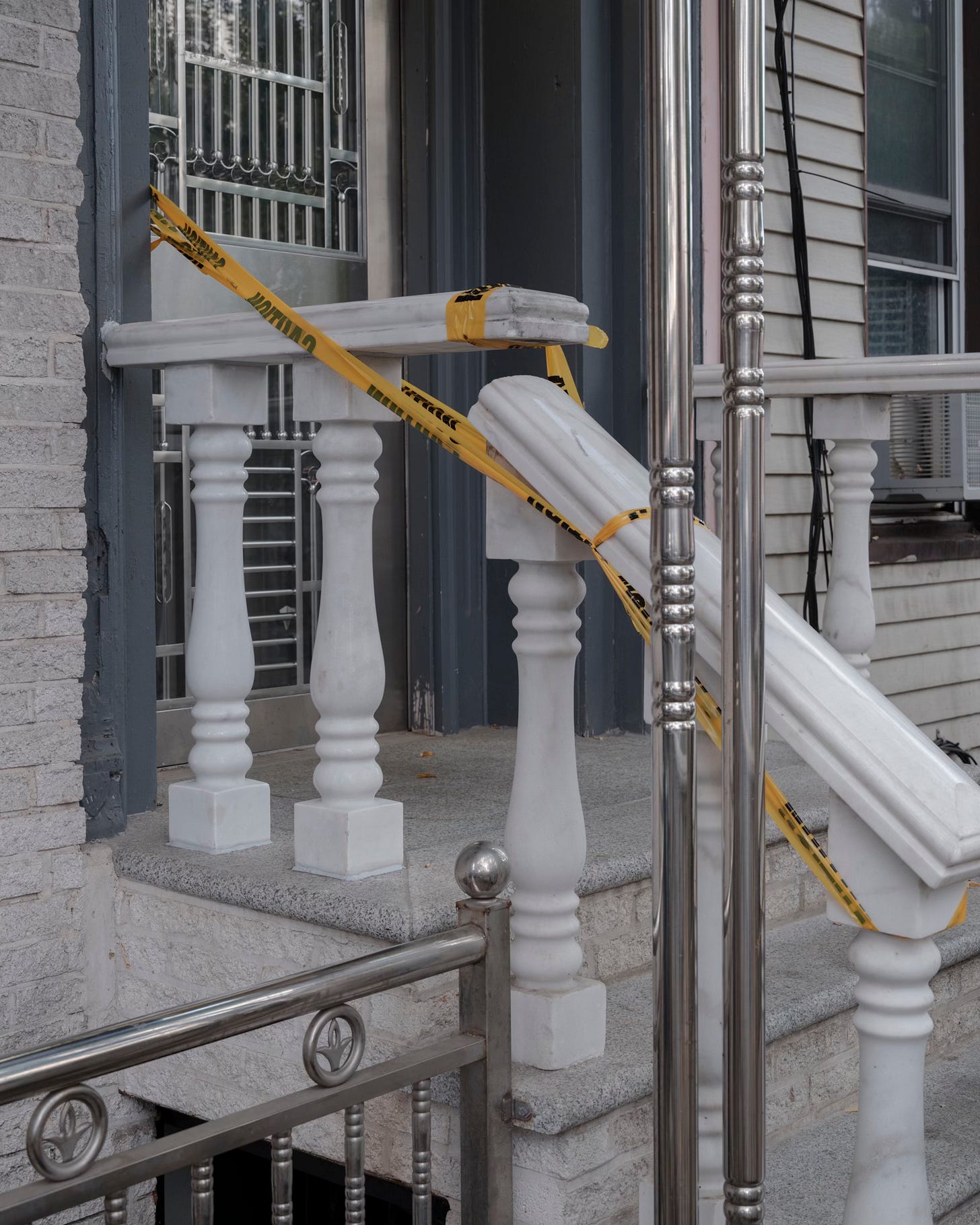
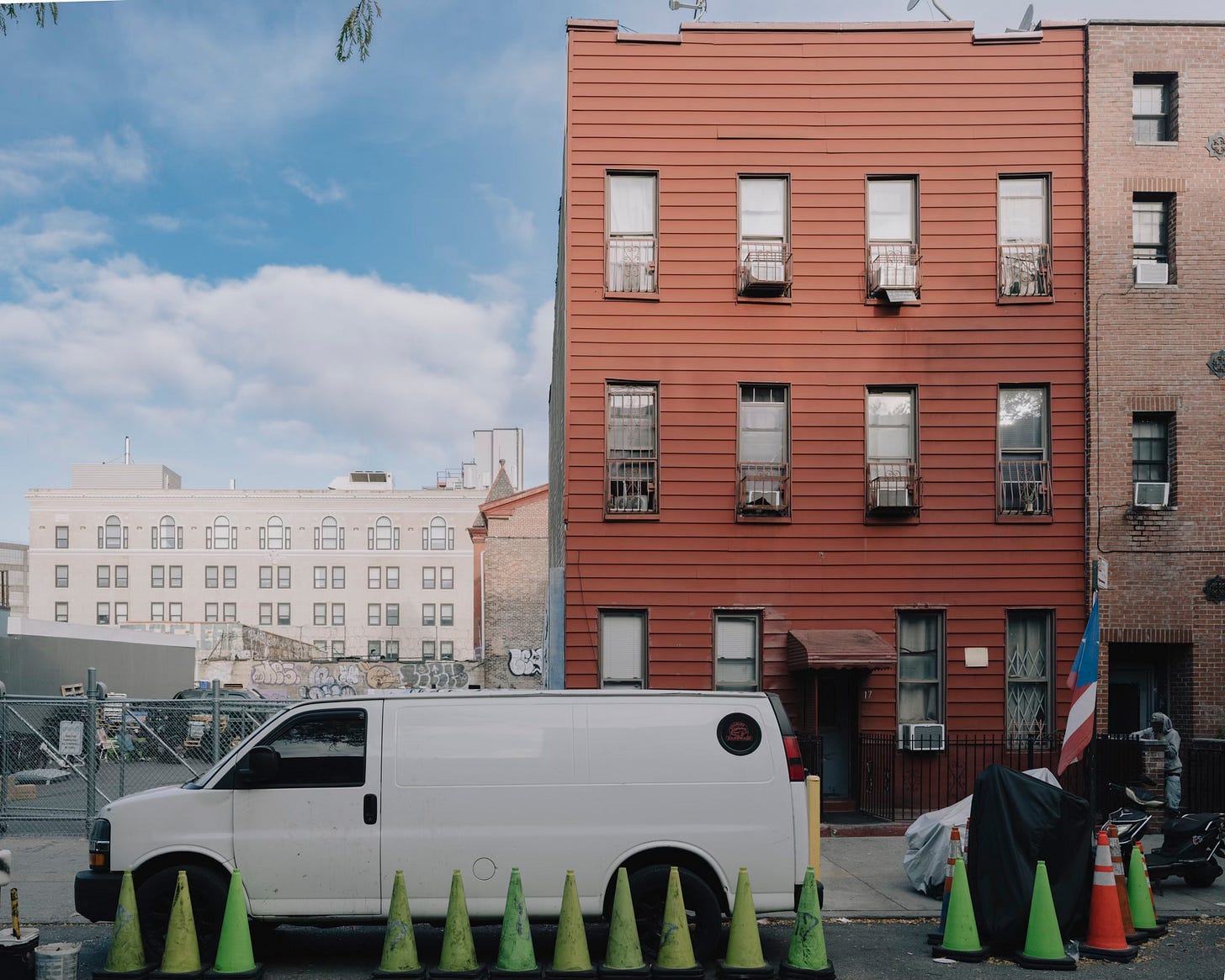
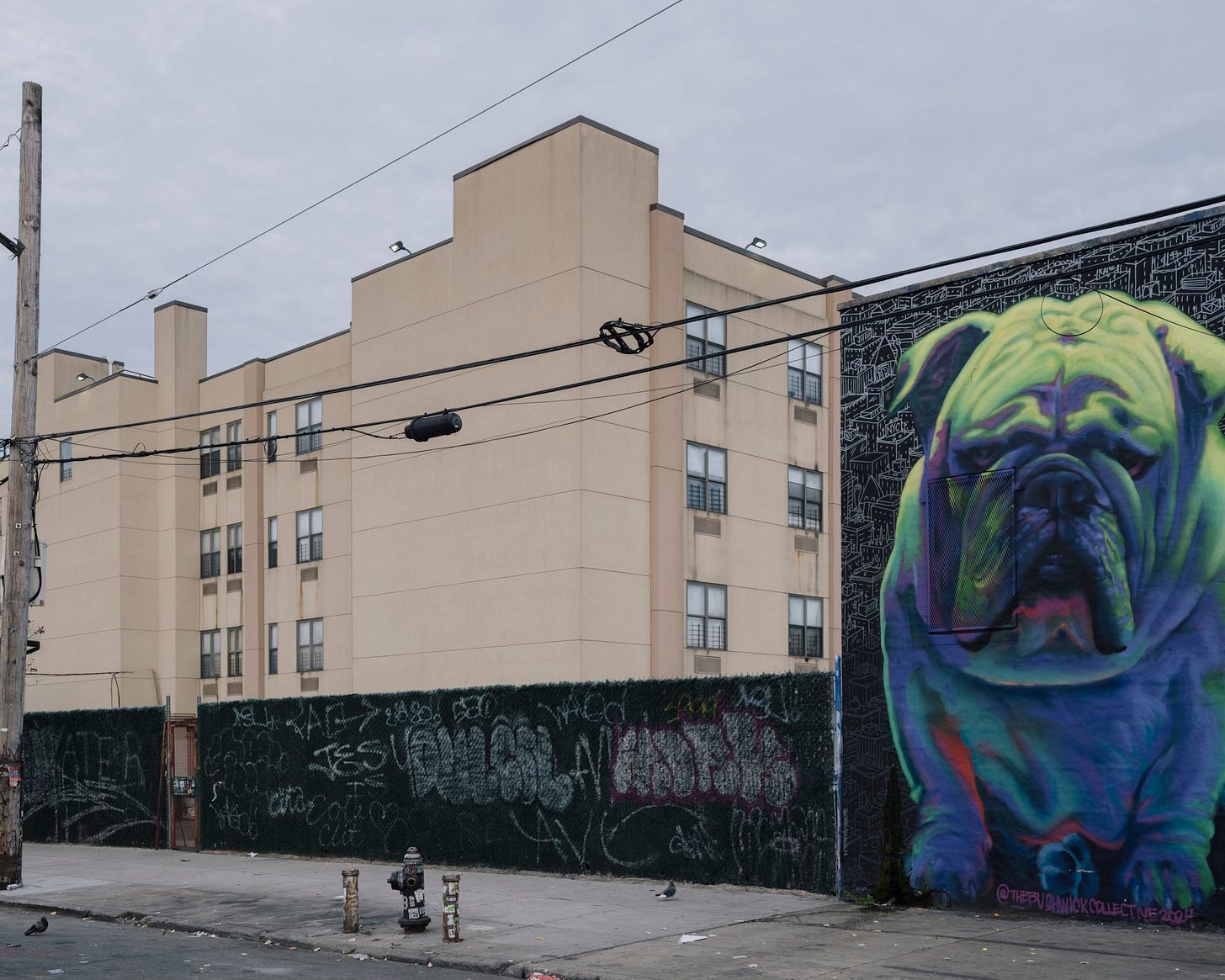
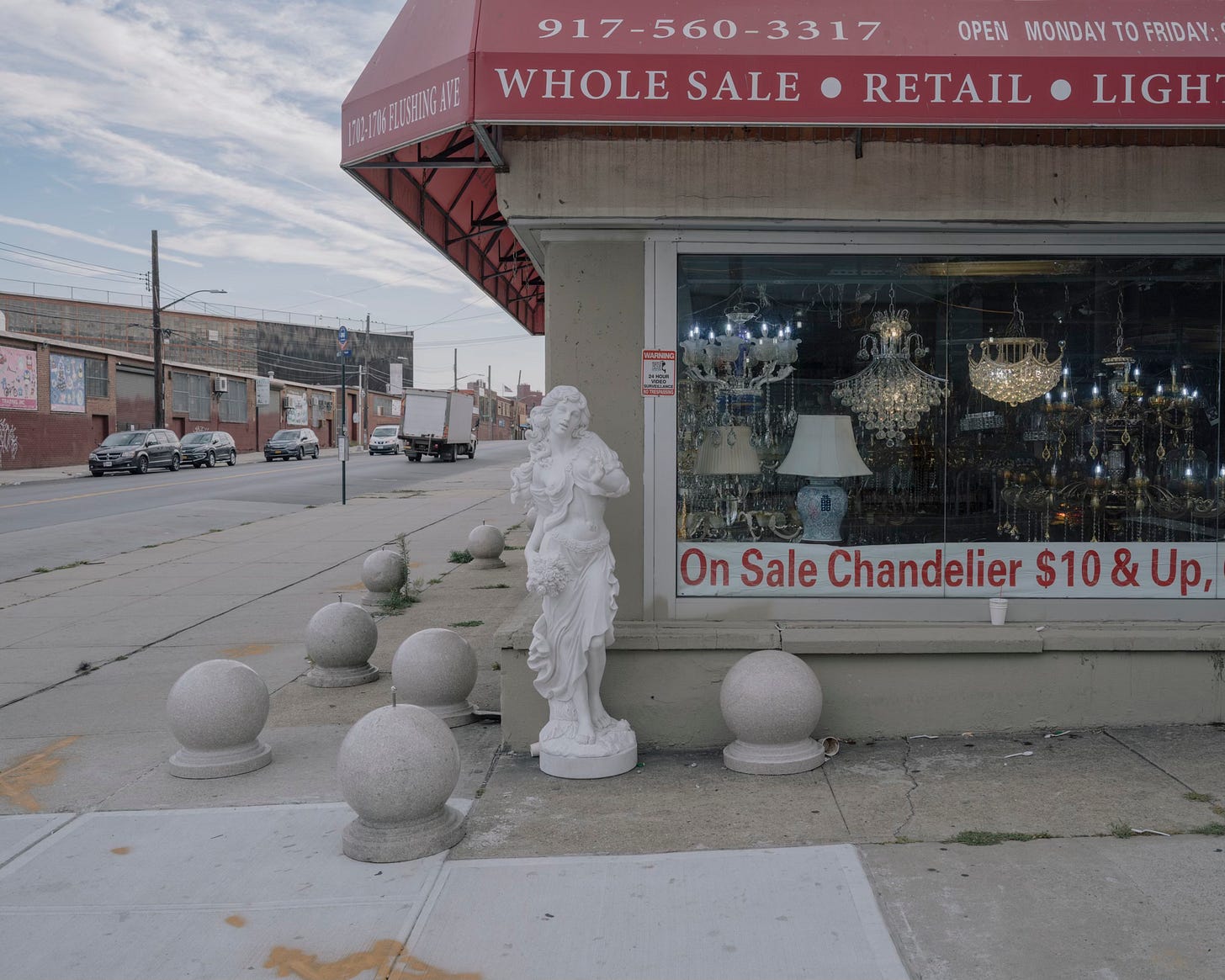
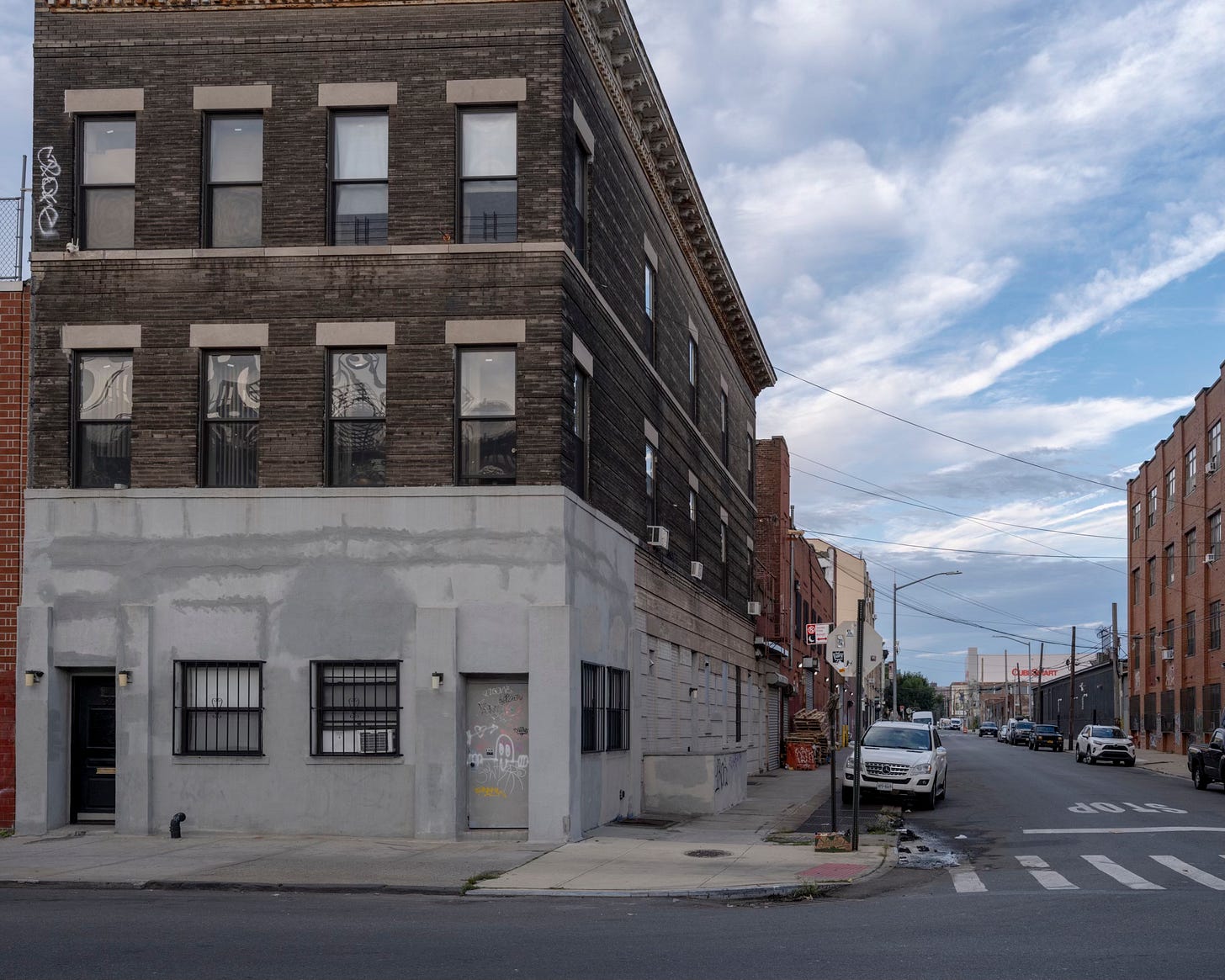
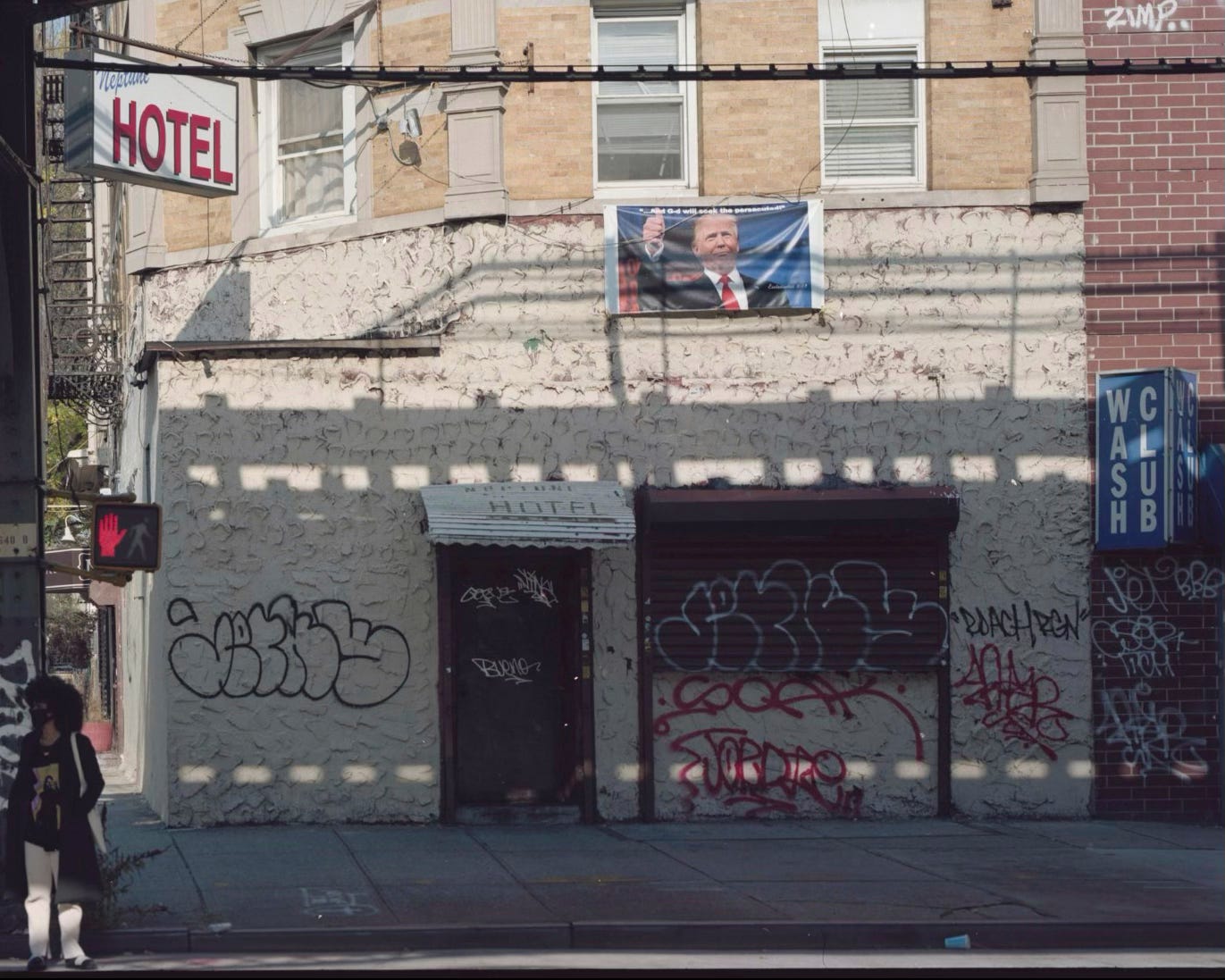
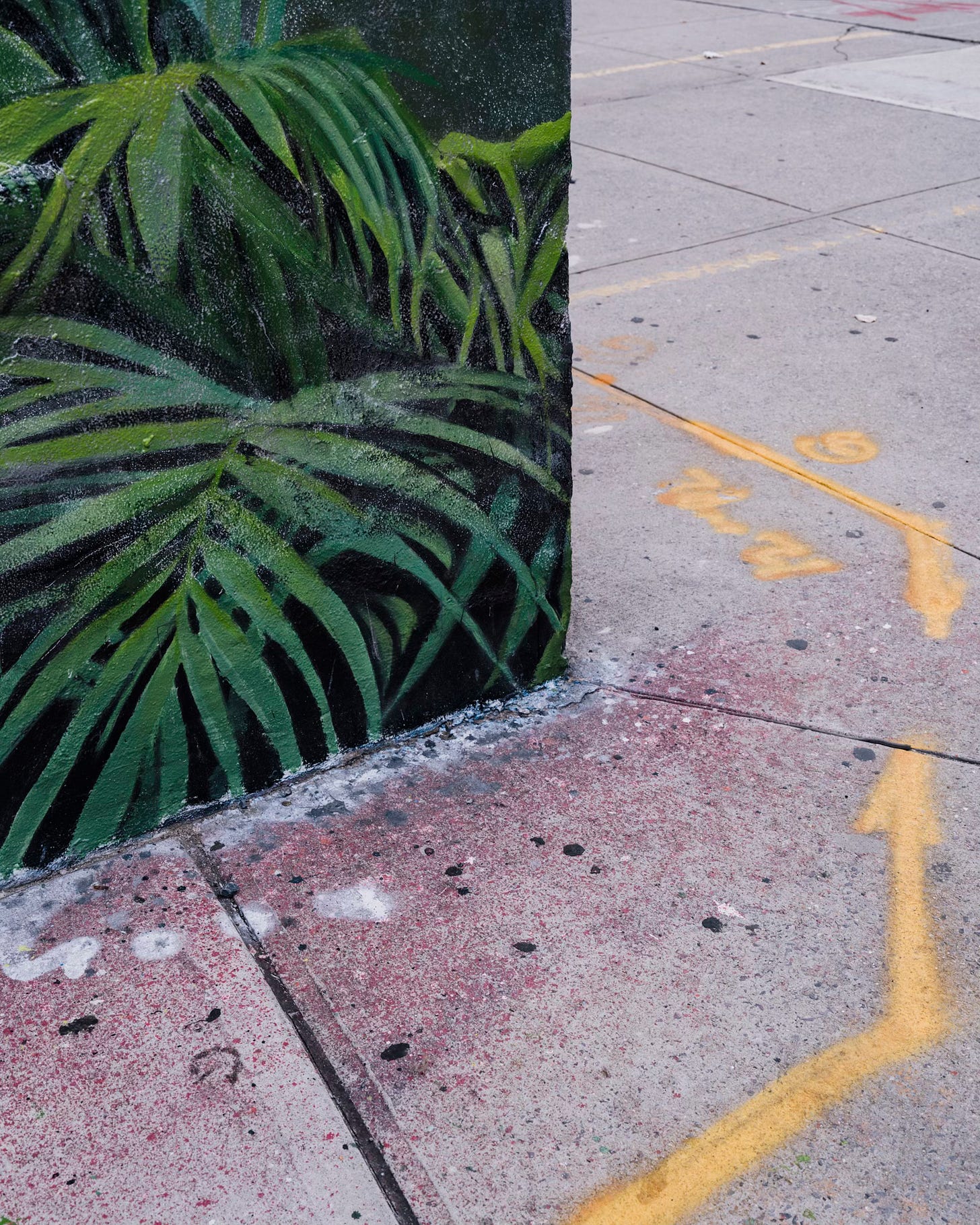
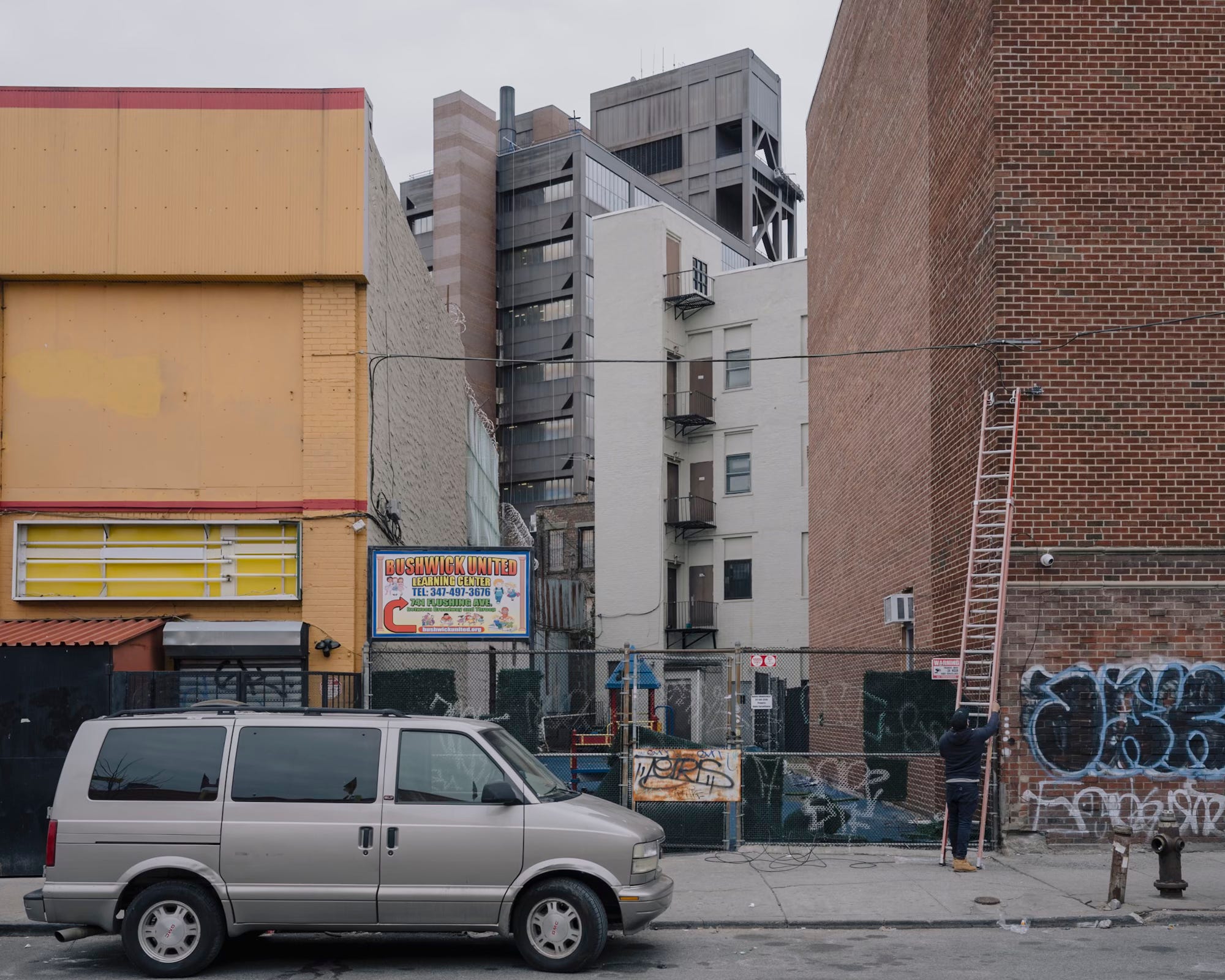

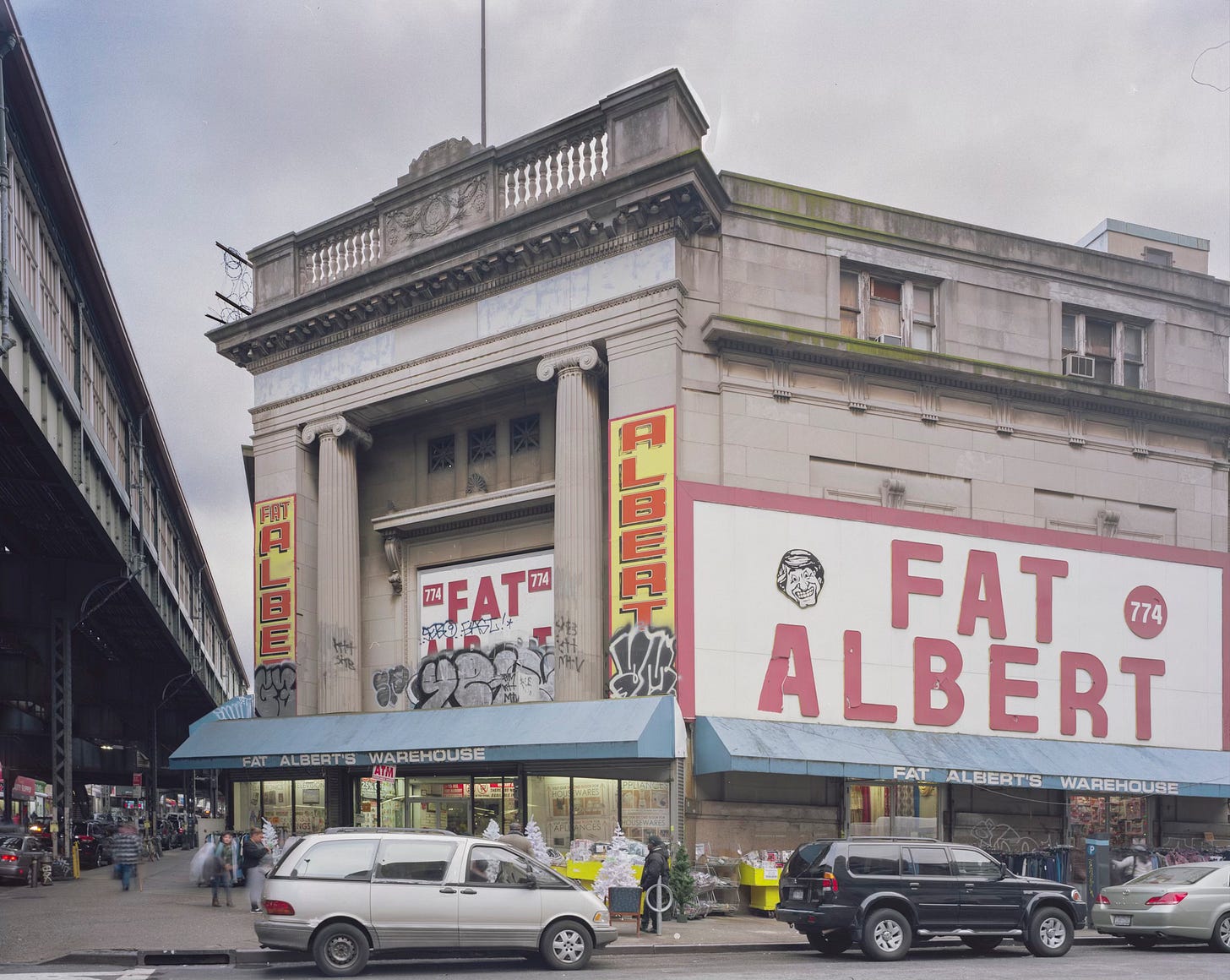
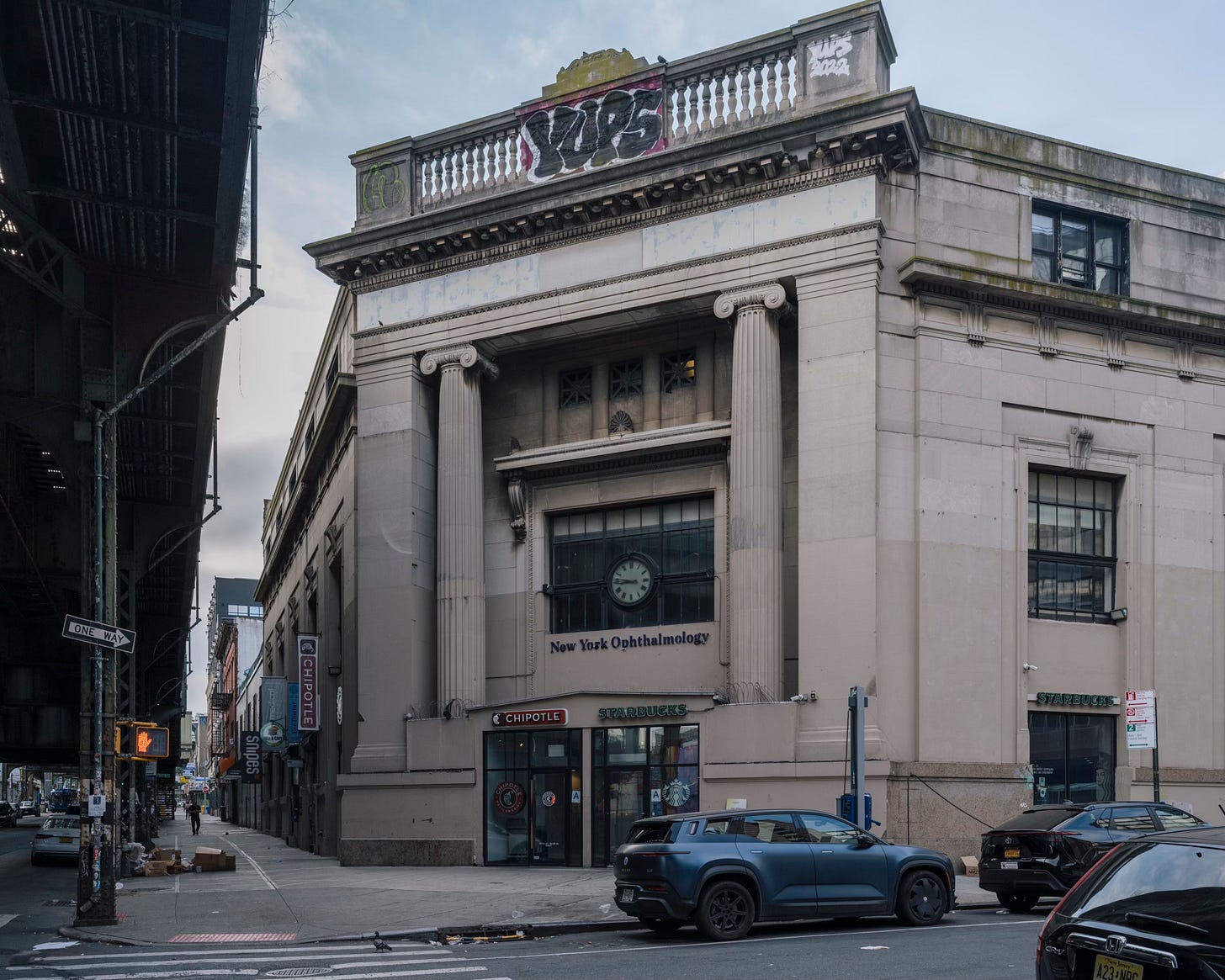
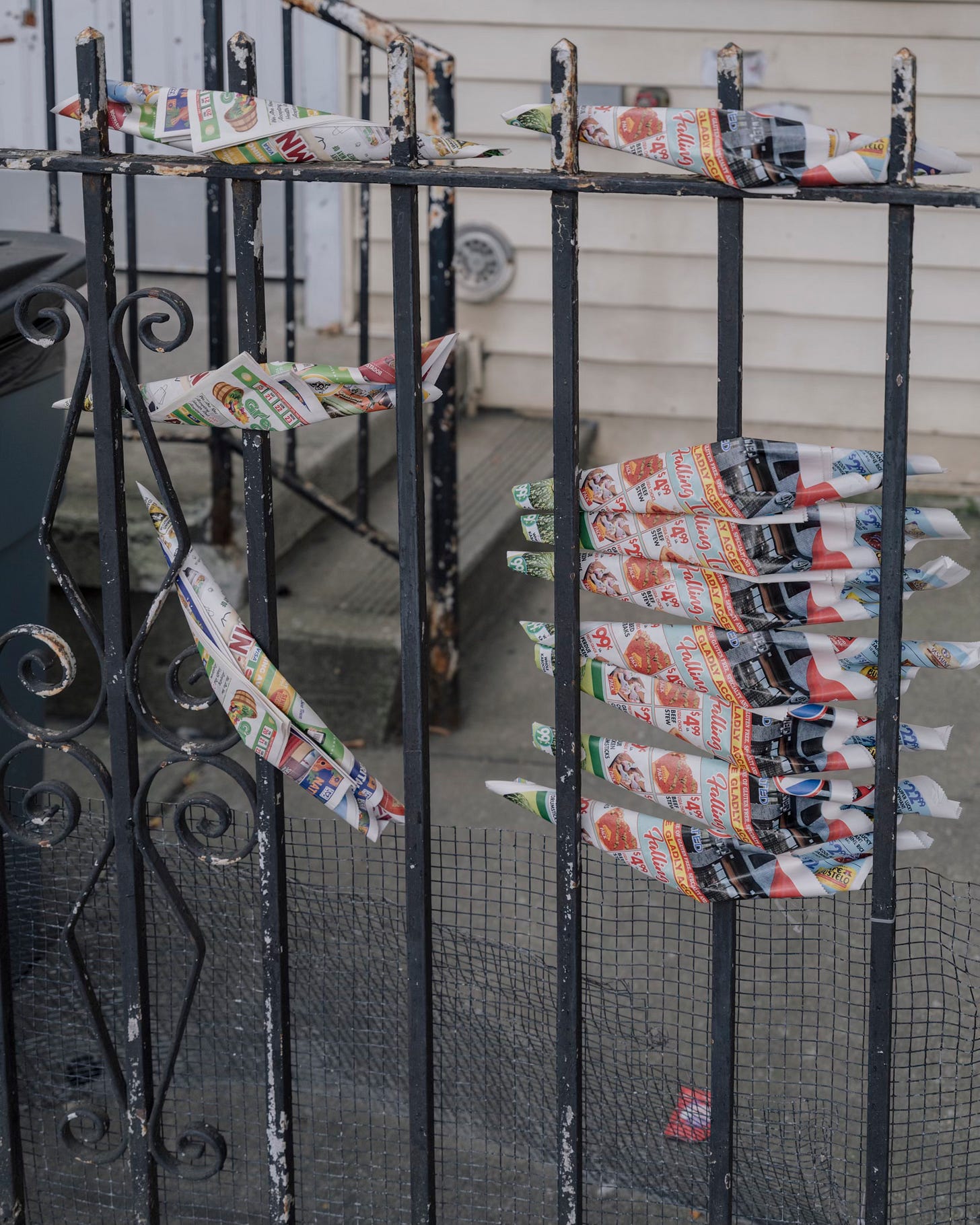
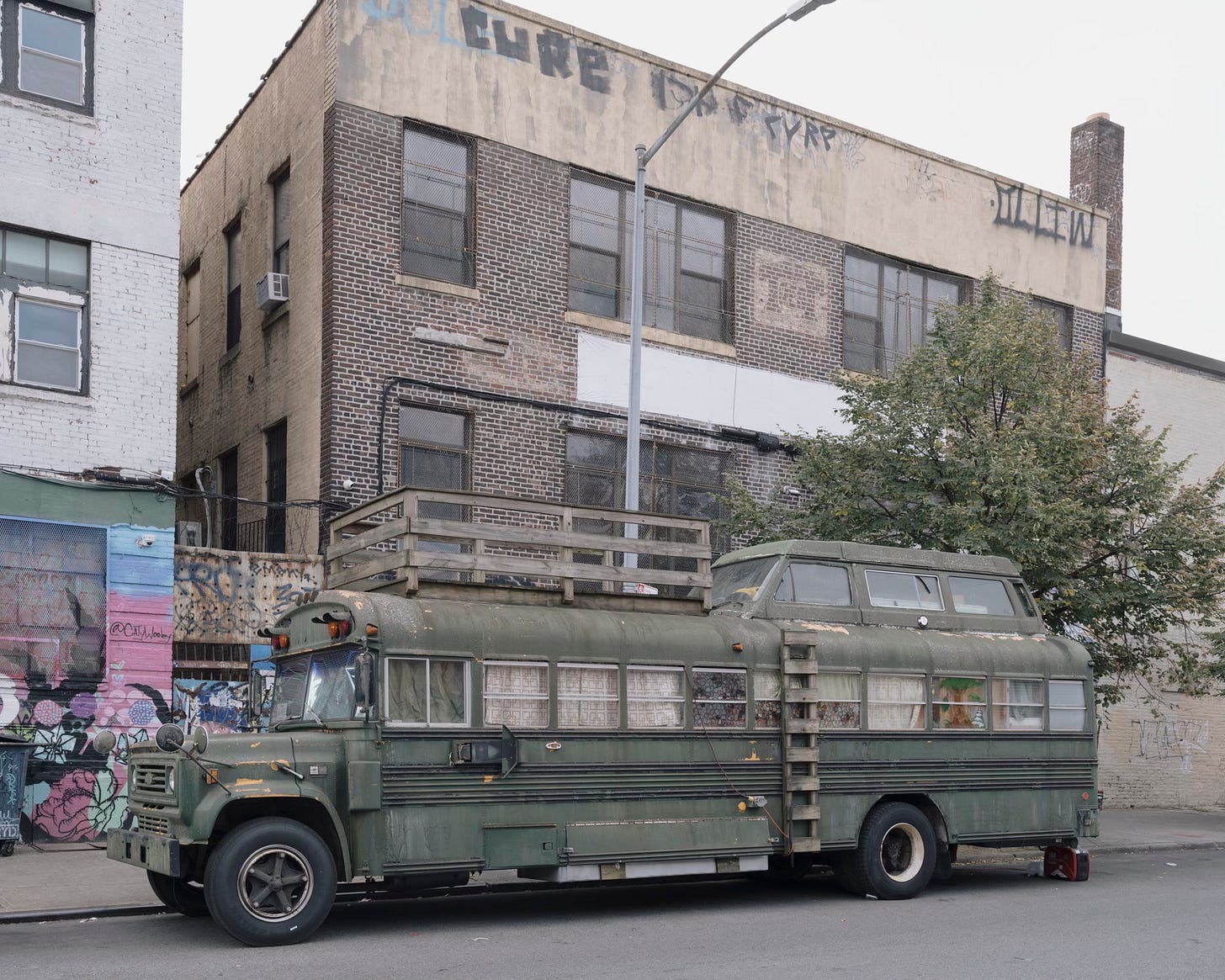
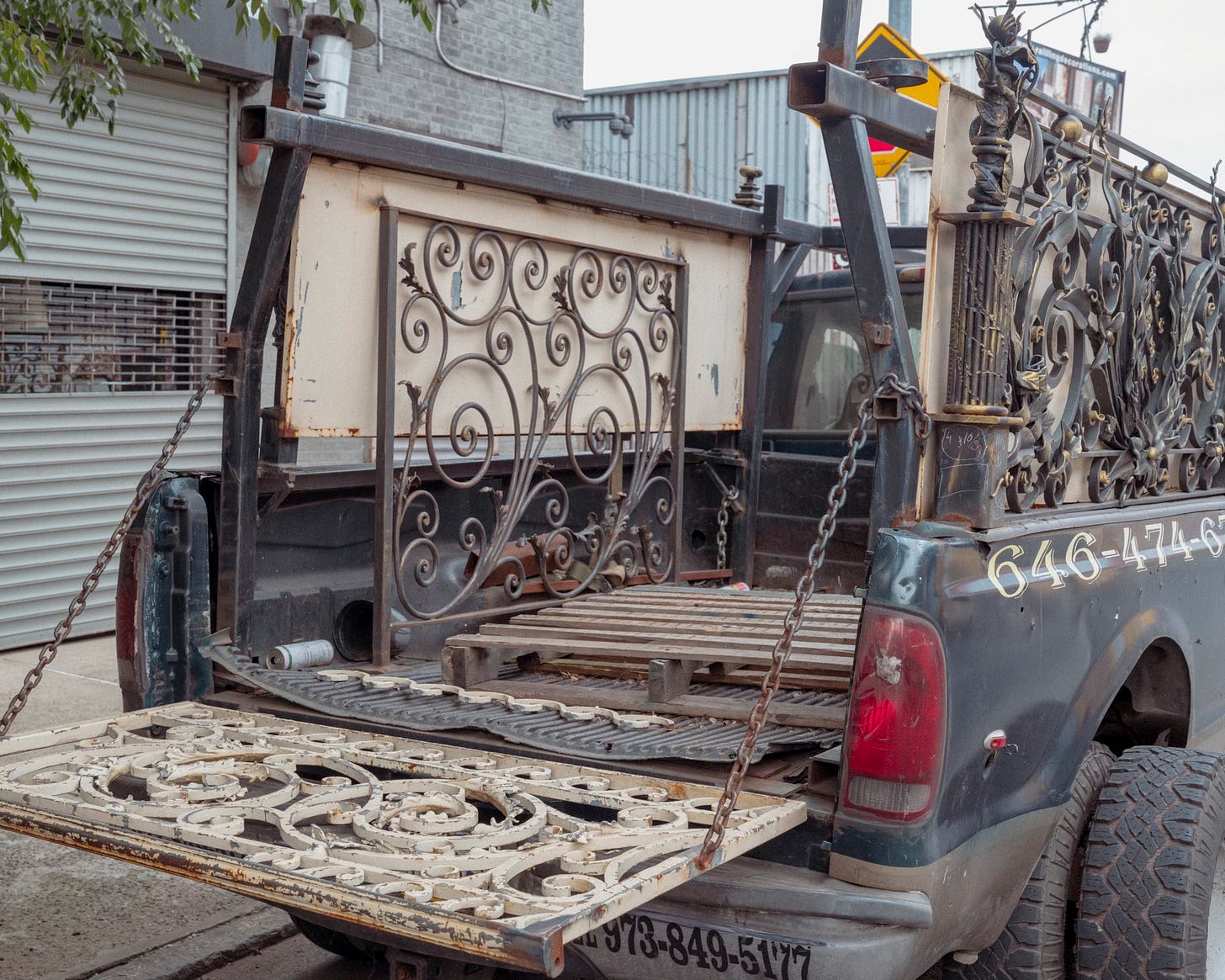
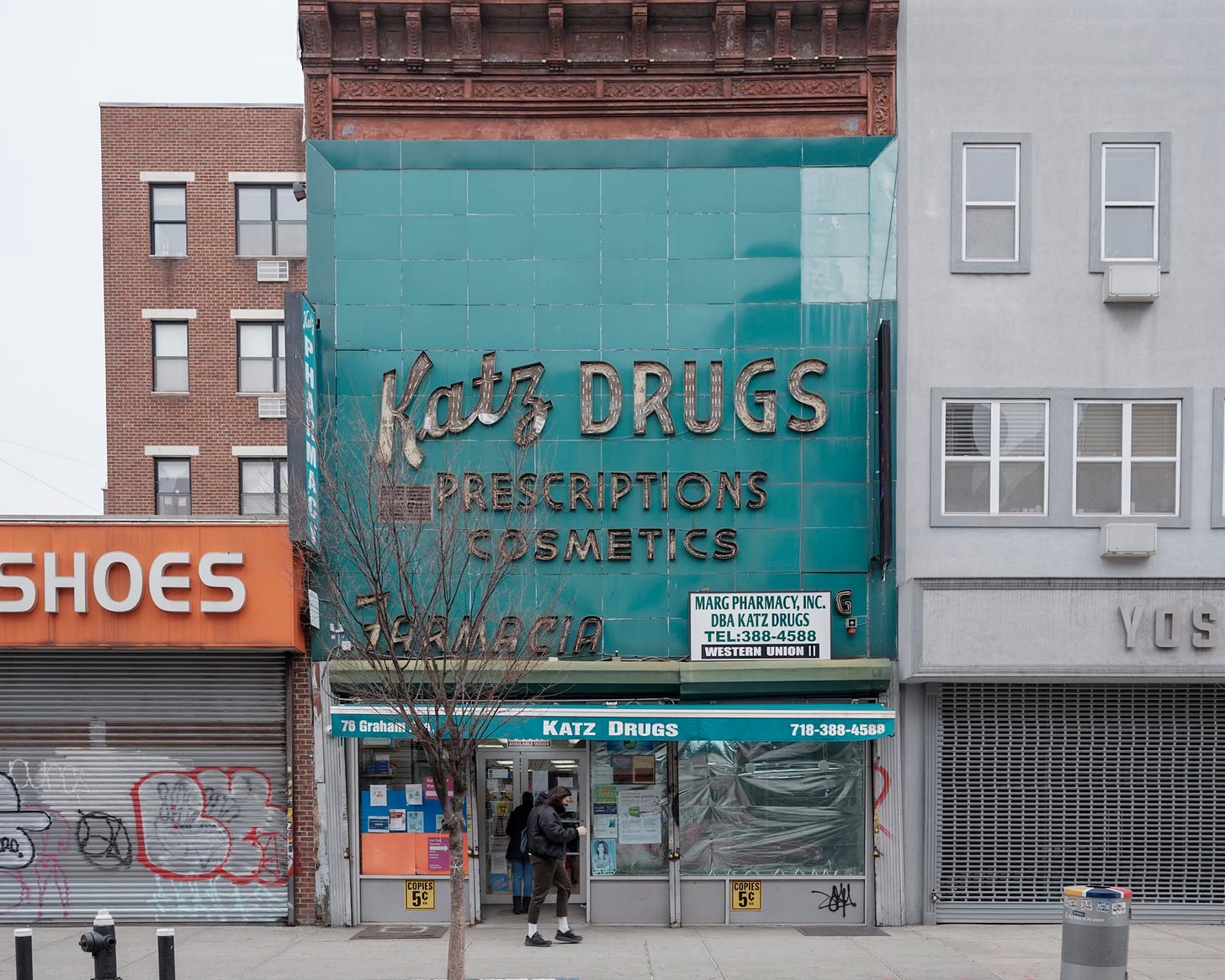
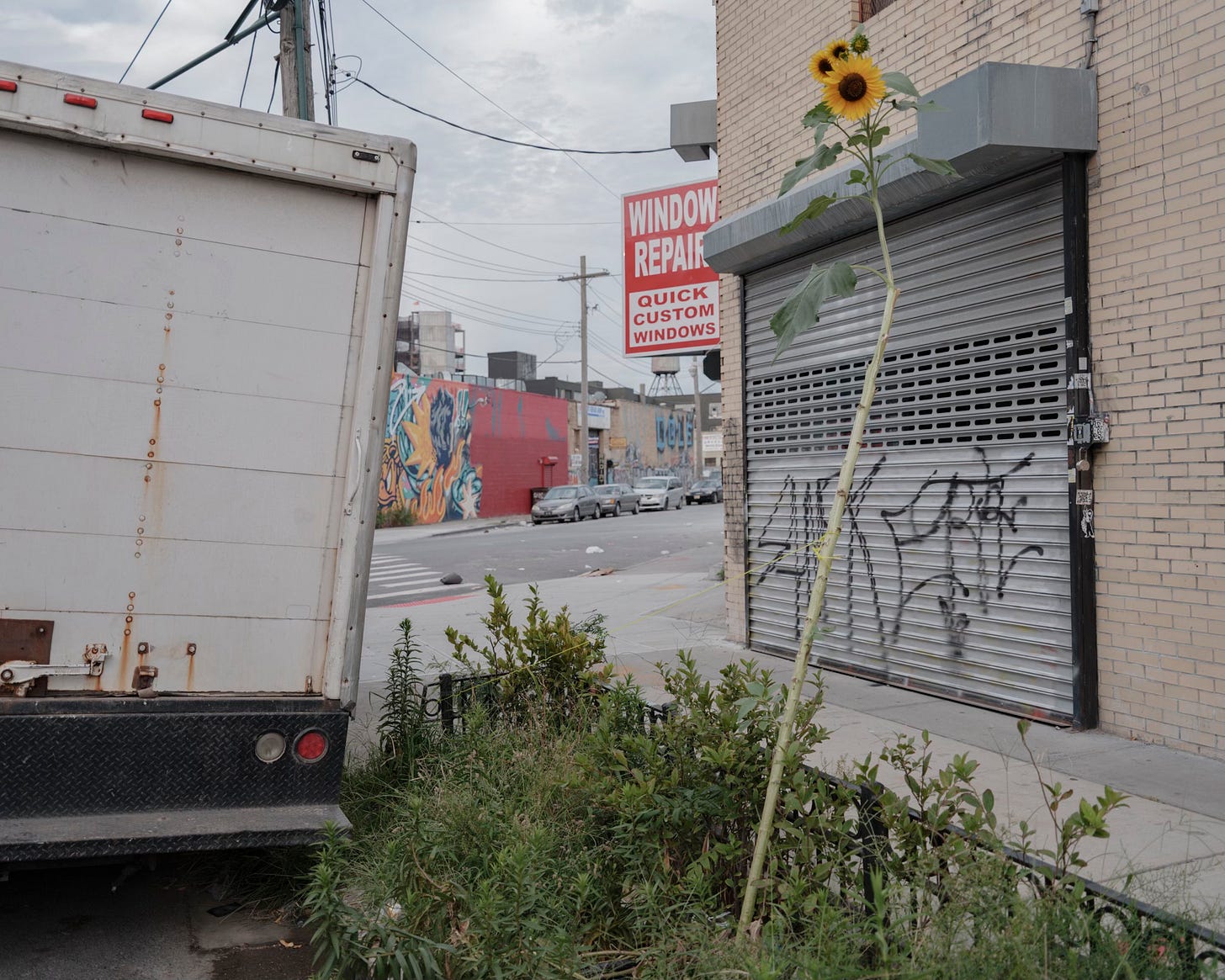
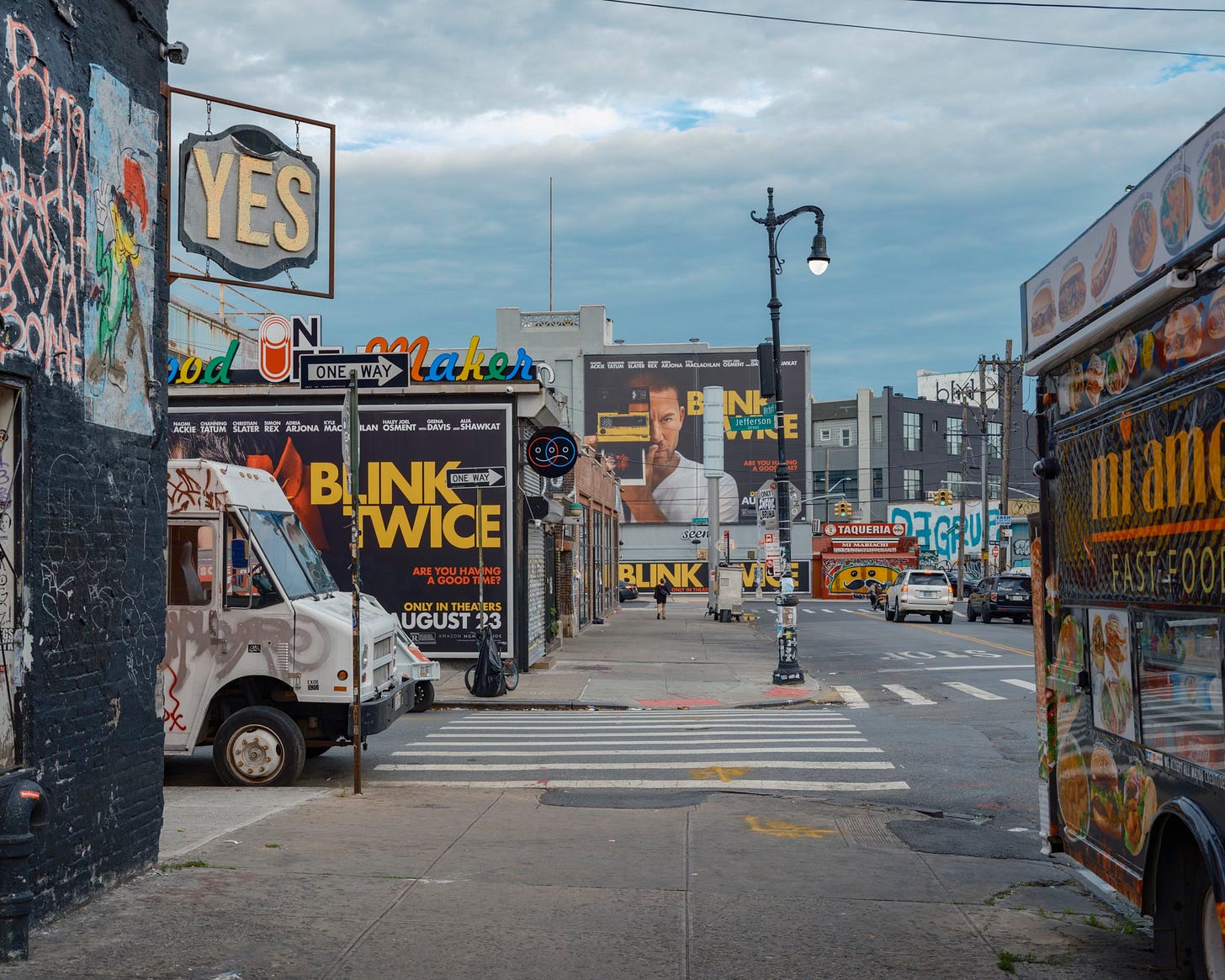
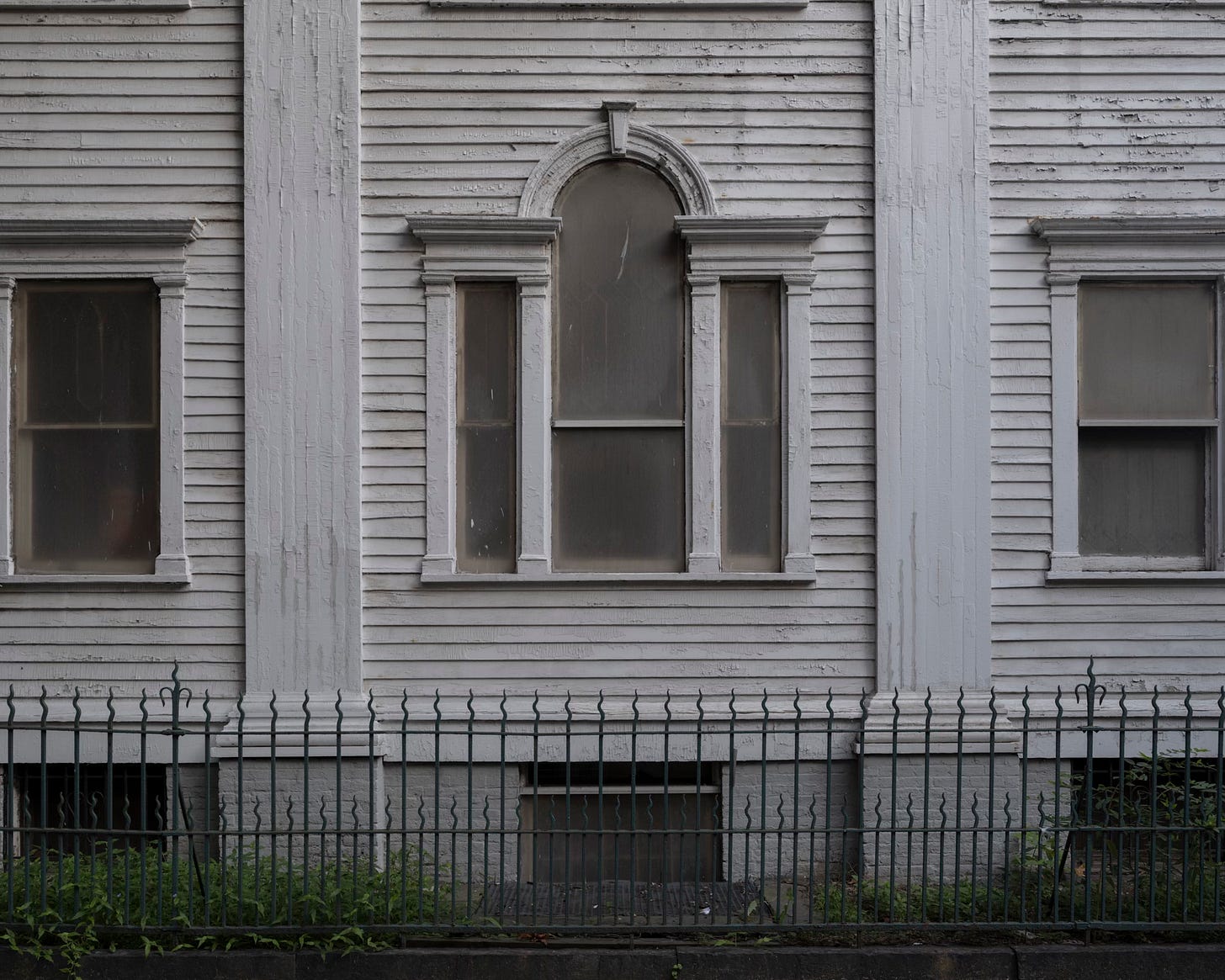
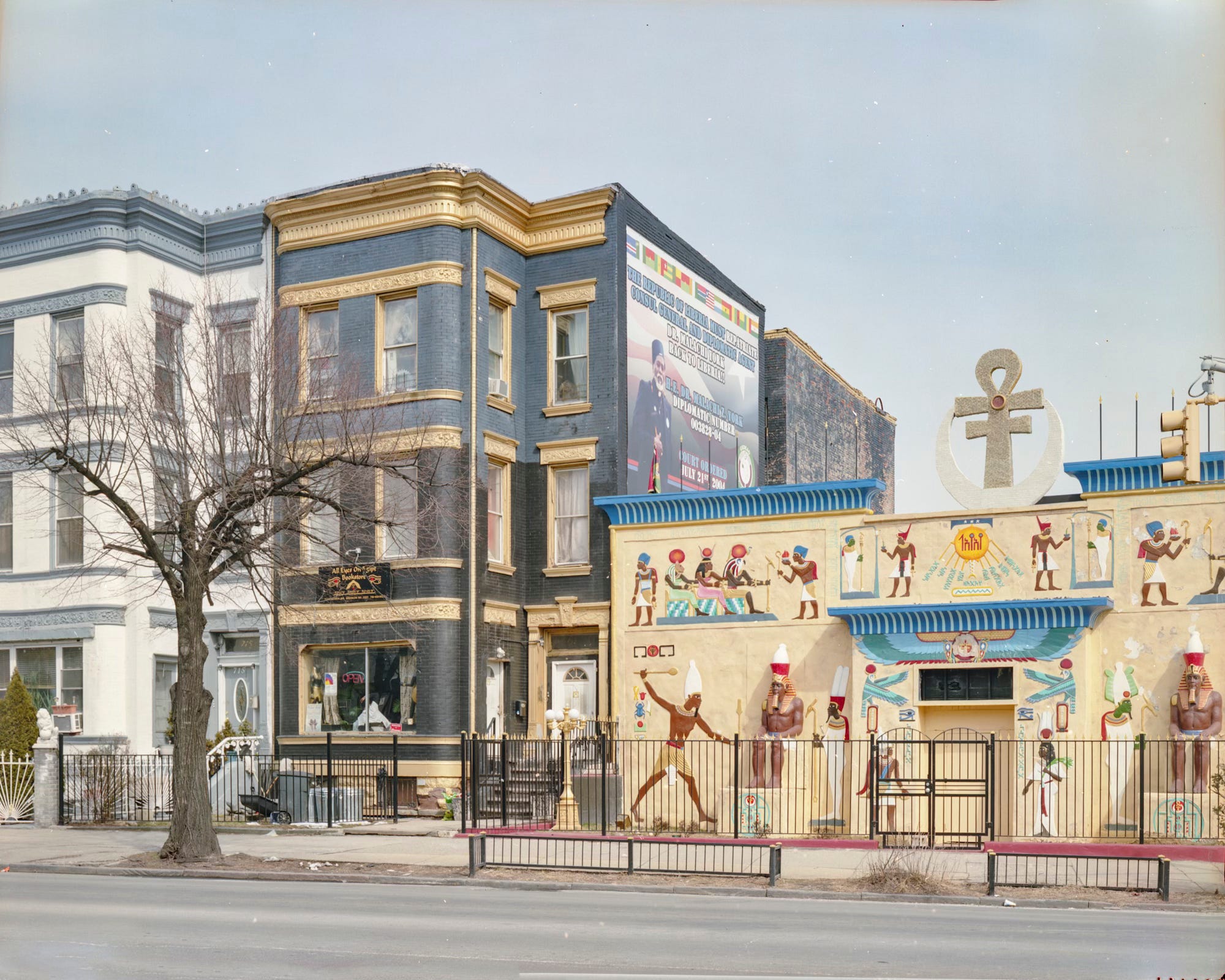
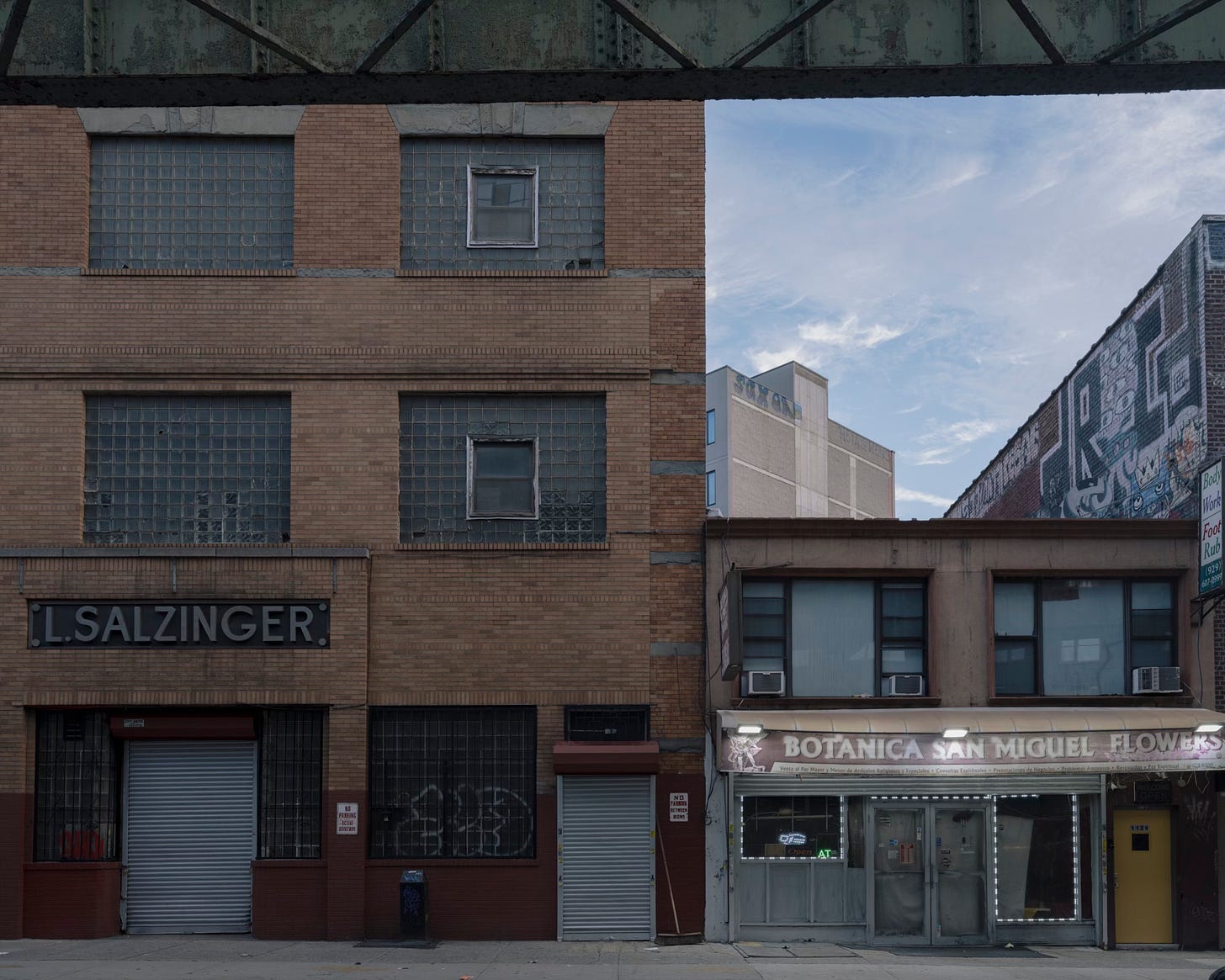
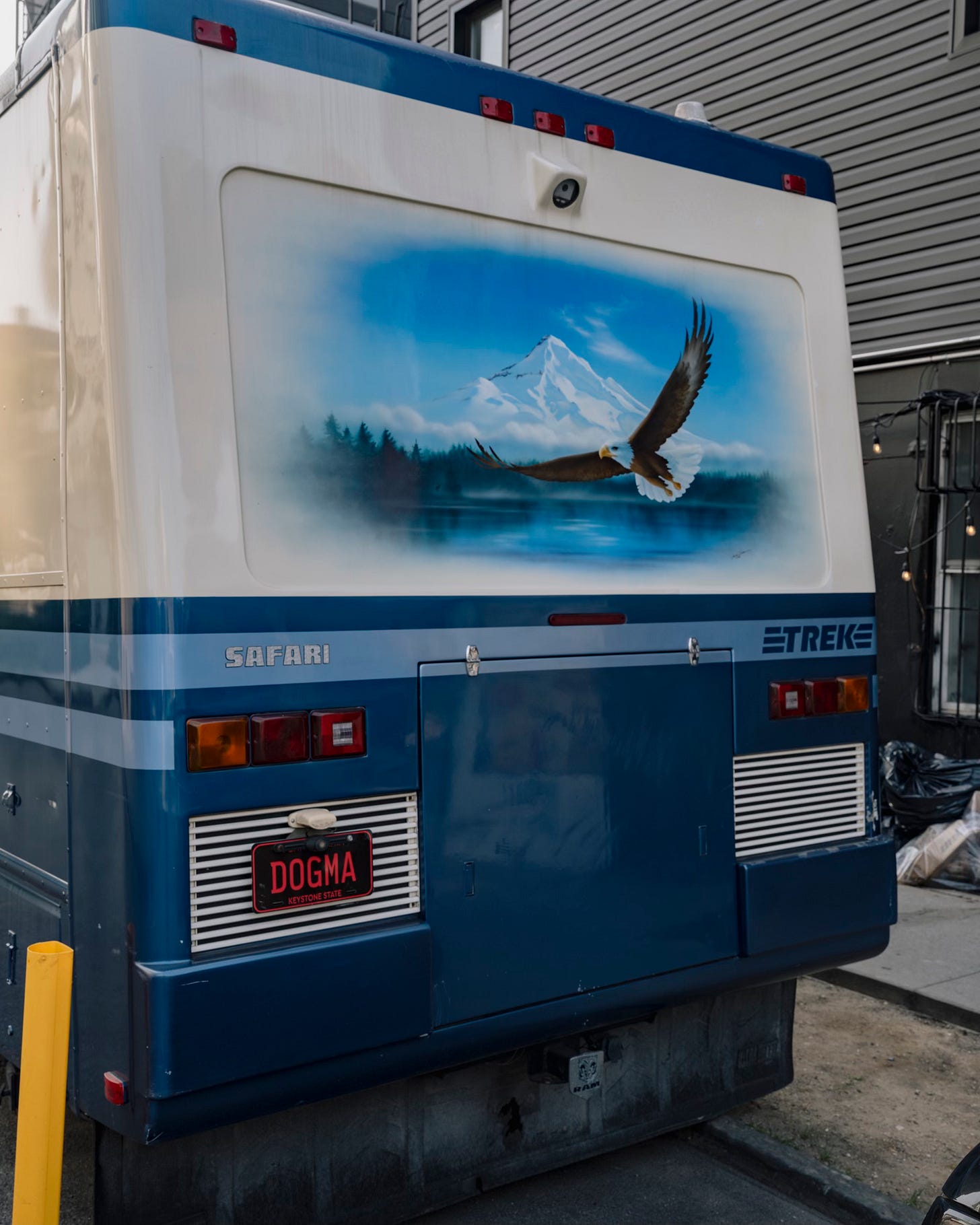
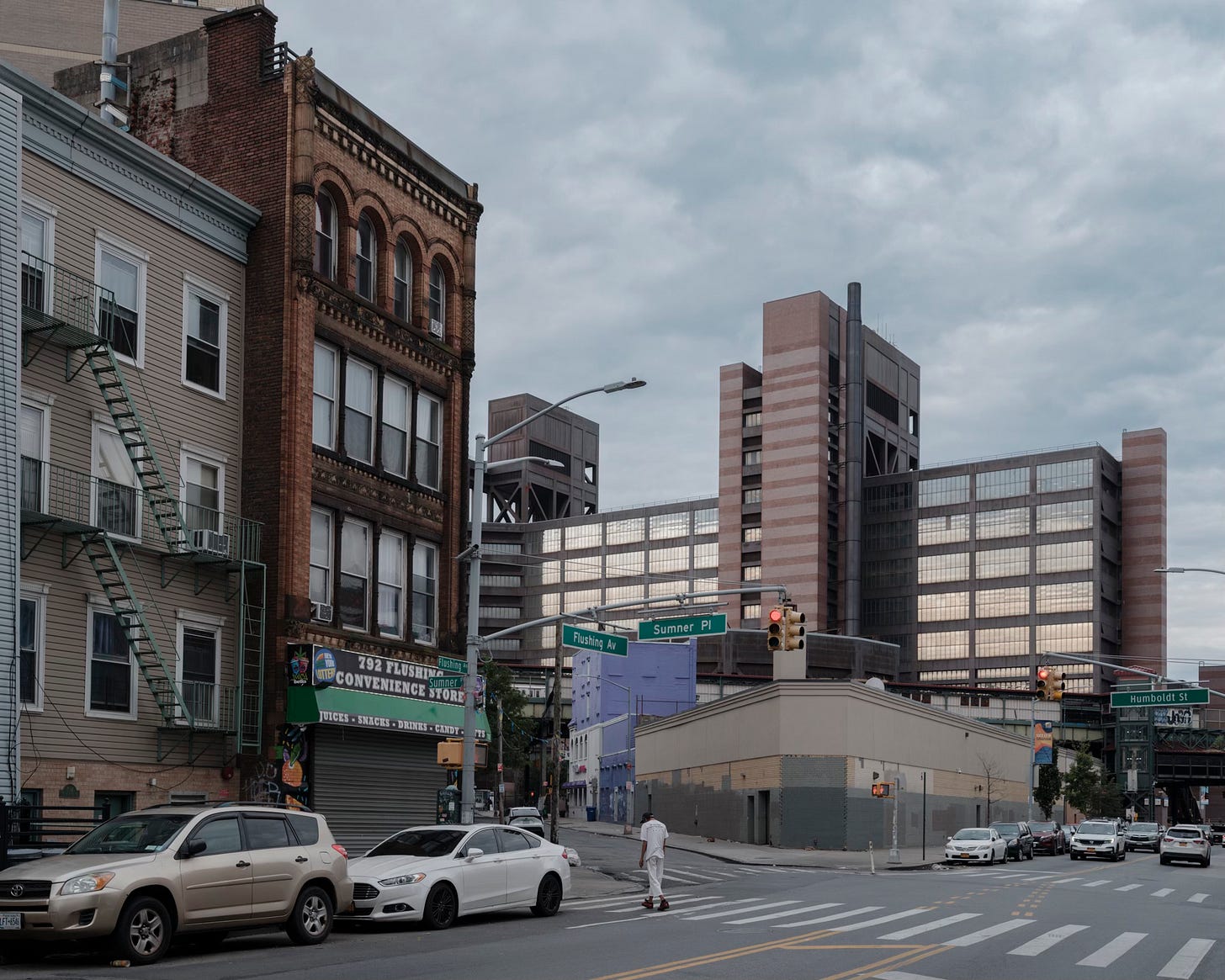
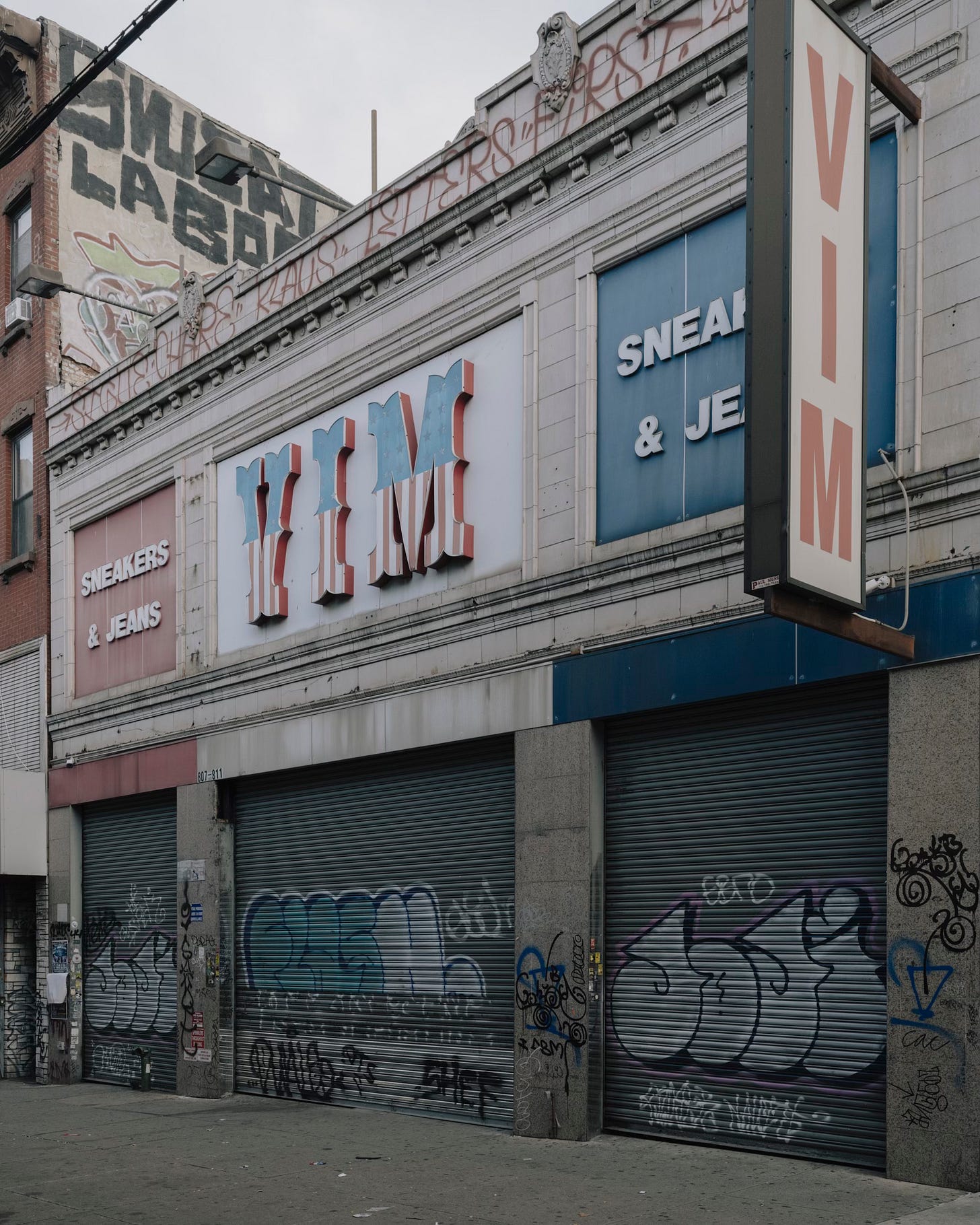
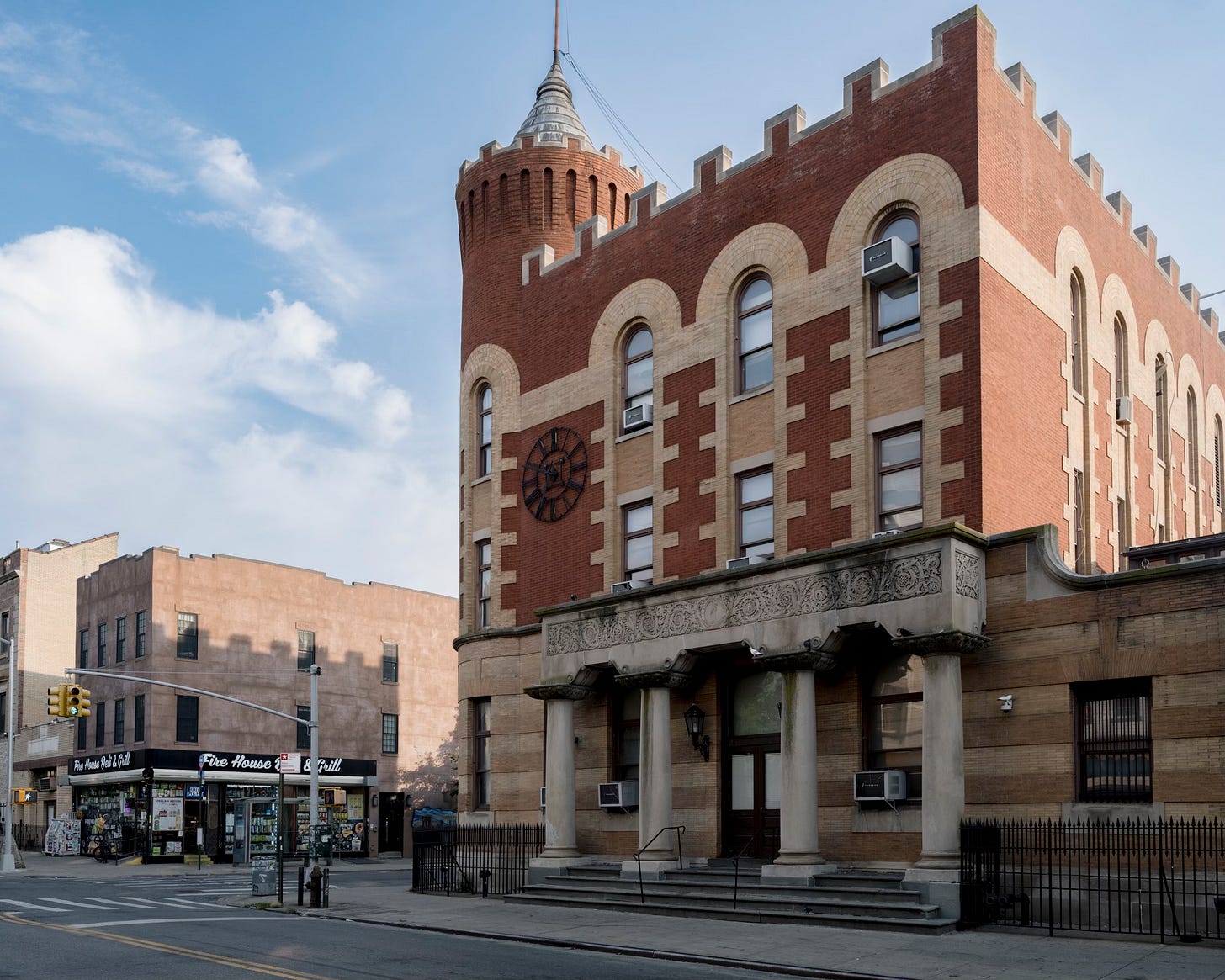
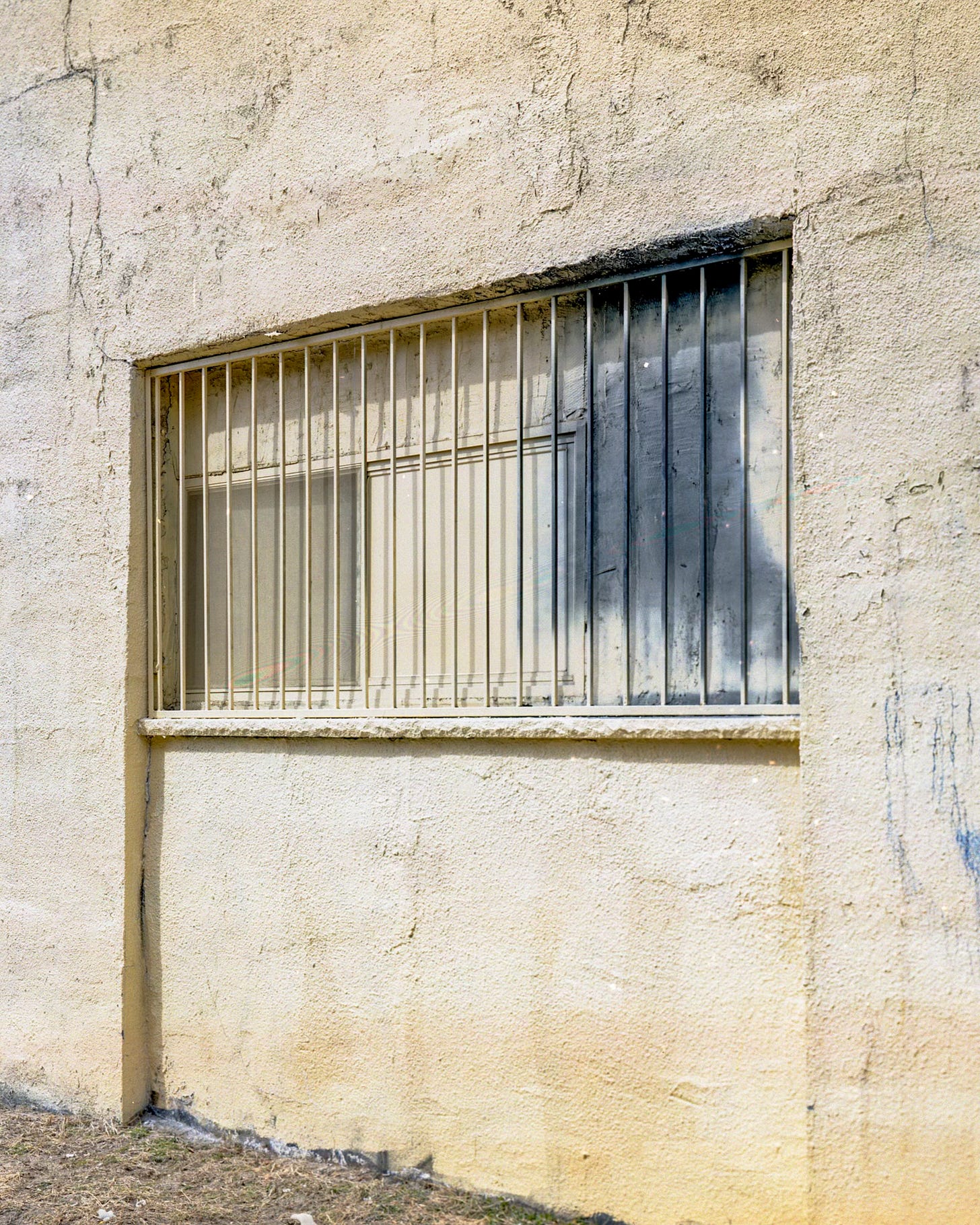
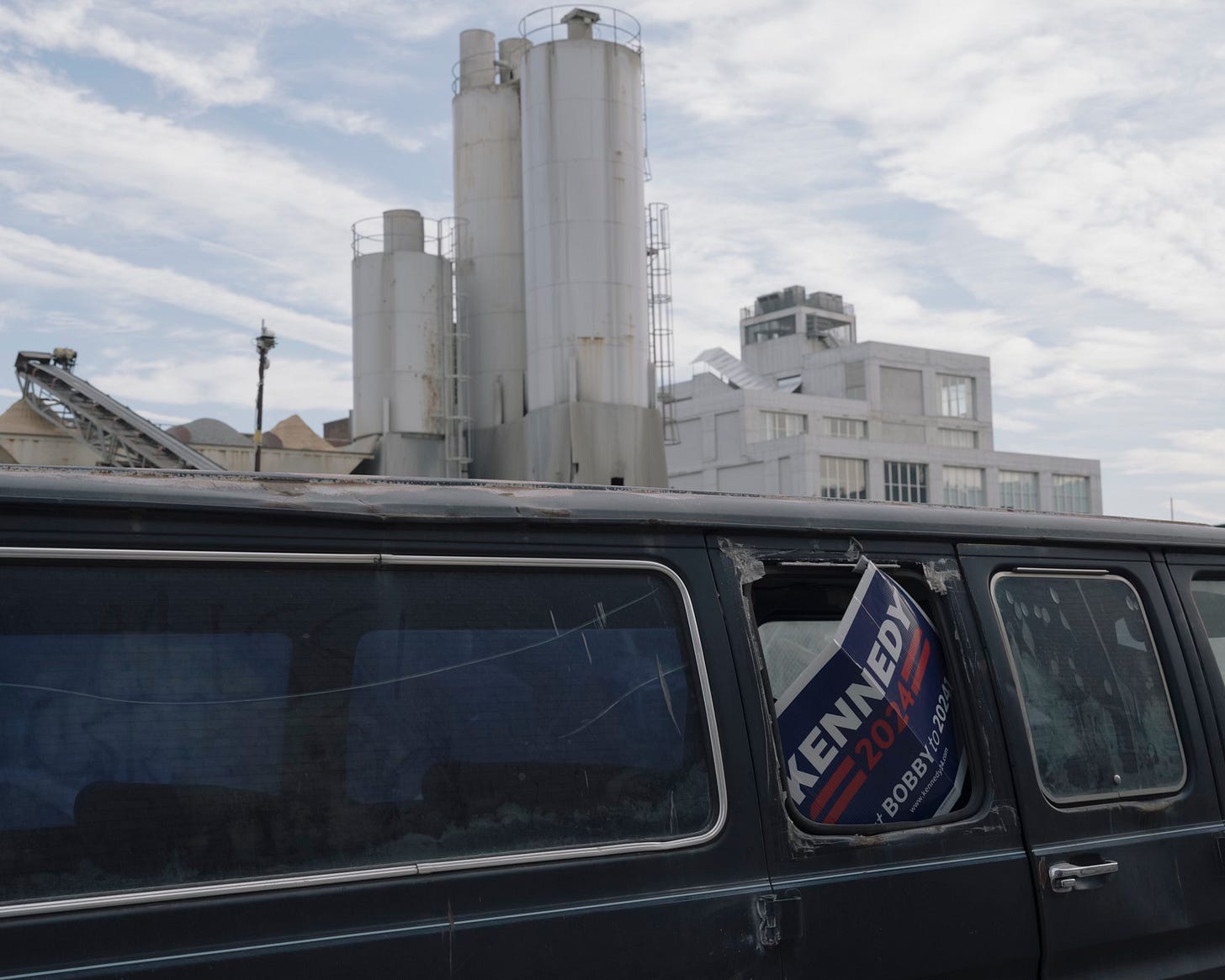

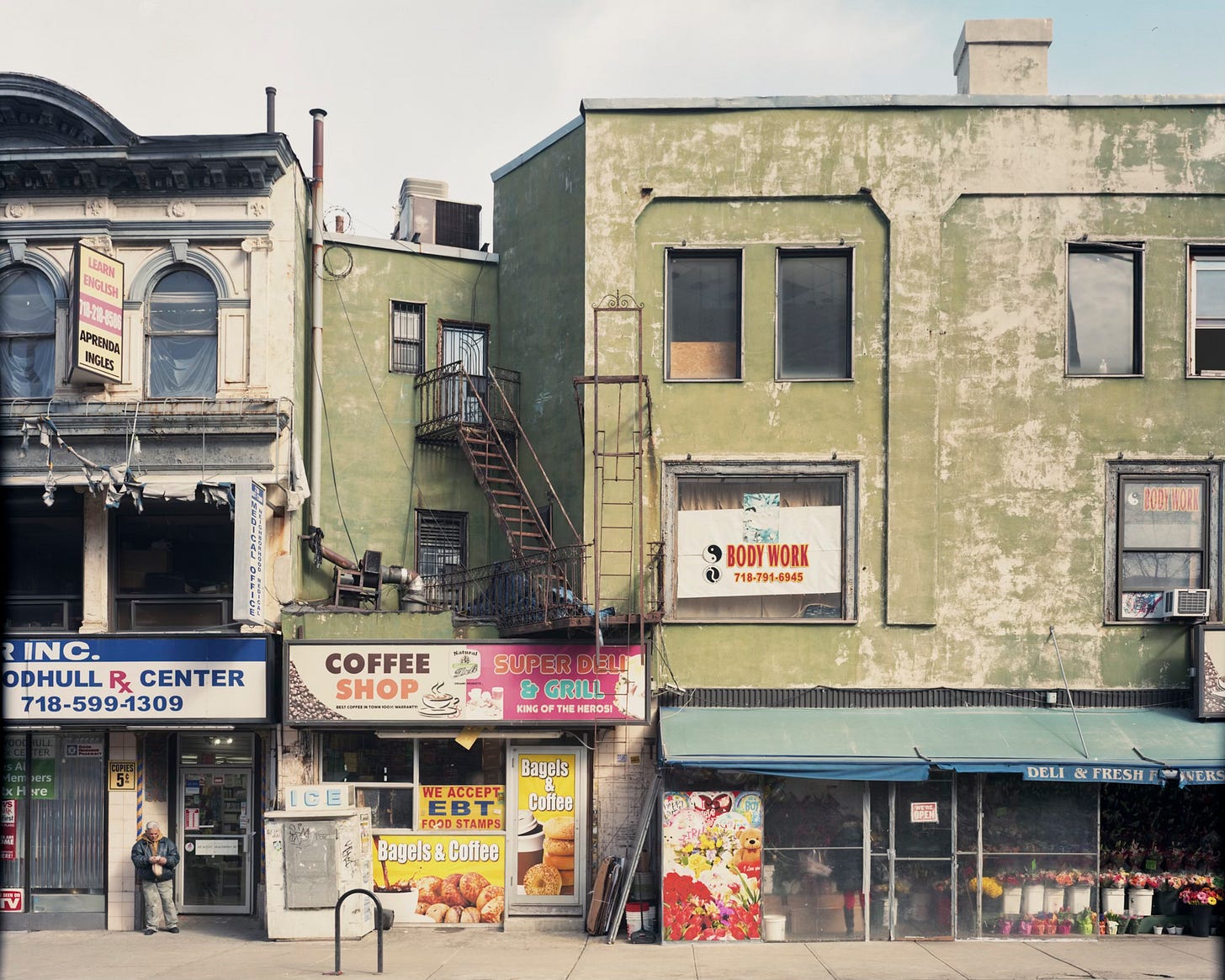
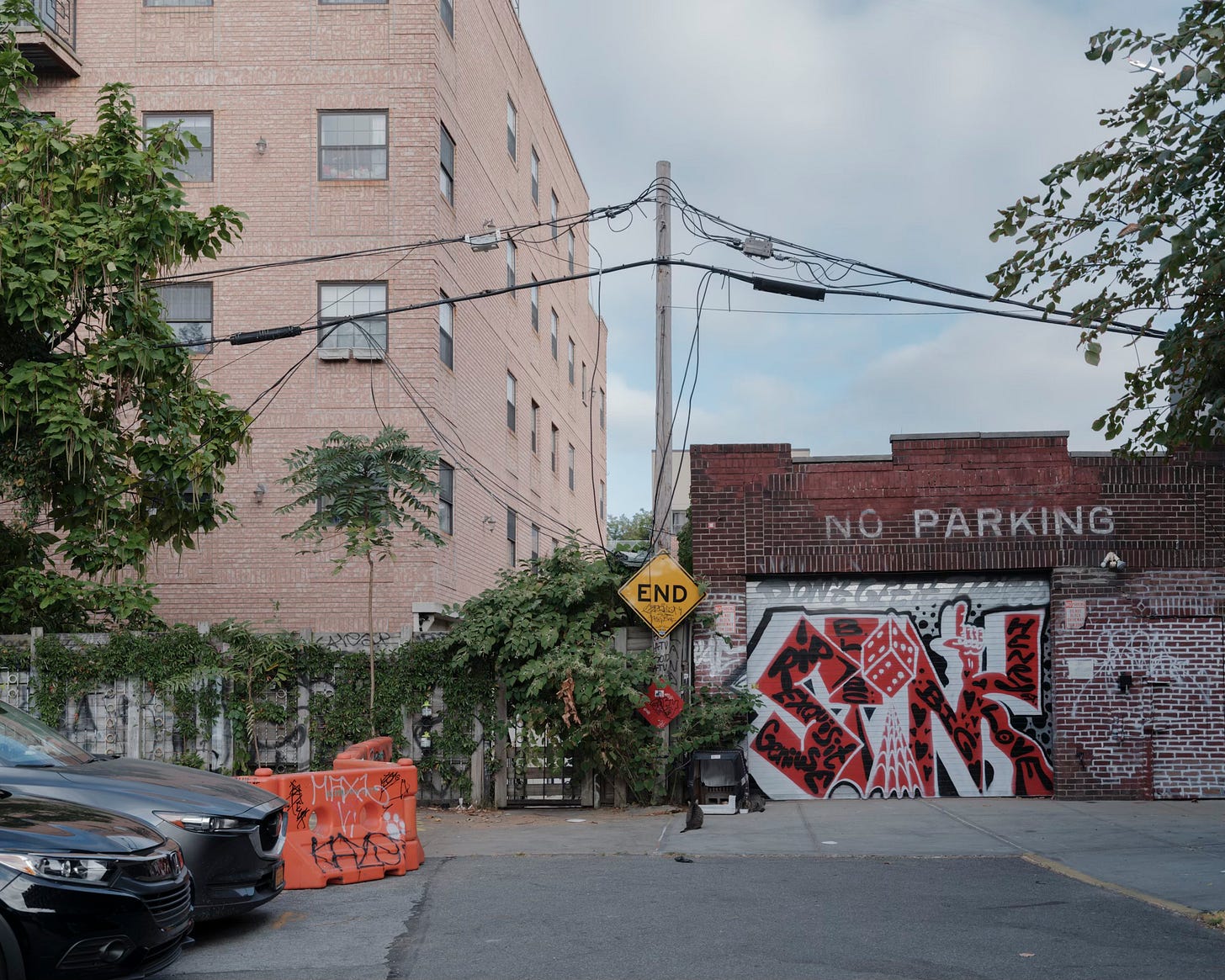
Hooboy, lots here for me to process. 'Cool neighborhood' doesn't fit with the visions of early 1970's Bushwick that are dancing in my head. In the early seventies I worked near one of the breweries. [I was outta there before the blackout and riots.] Walking to or from a nearby old-fashioned luncheonette for takeout coffee in one of those iconic blue & white paper coffee cups, one might occasionally see a rat in the empty lots. Mary, owner of said luncheonette, was from an island in Italy. Upon learning that I would be visiting Italy in the summer of 1972 she insisted that I go to the island of Ischia - which I did! At that time it was not overrun with tourists and most of the tourists by far were European, not American. I'm sure I wouldn't recognize either Ischia or Bushwick today.
Loved "It’s becoming the kind of place you go to remove your tattoo." Absolutely devastating. 😂😂😂